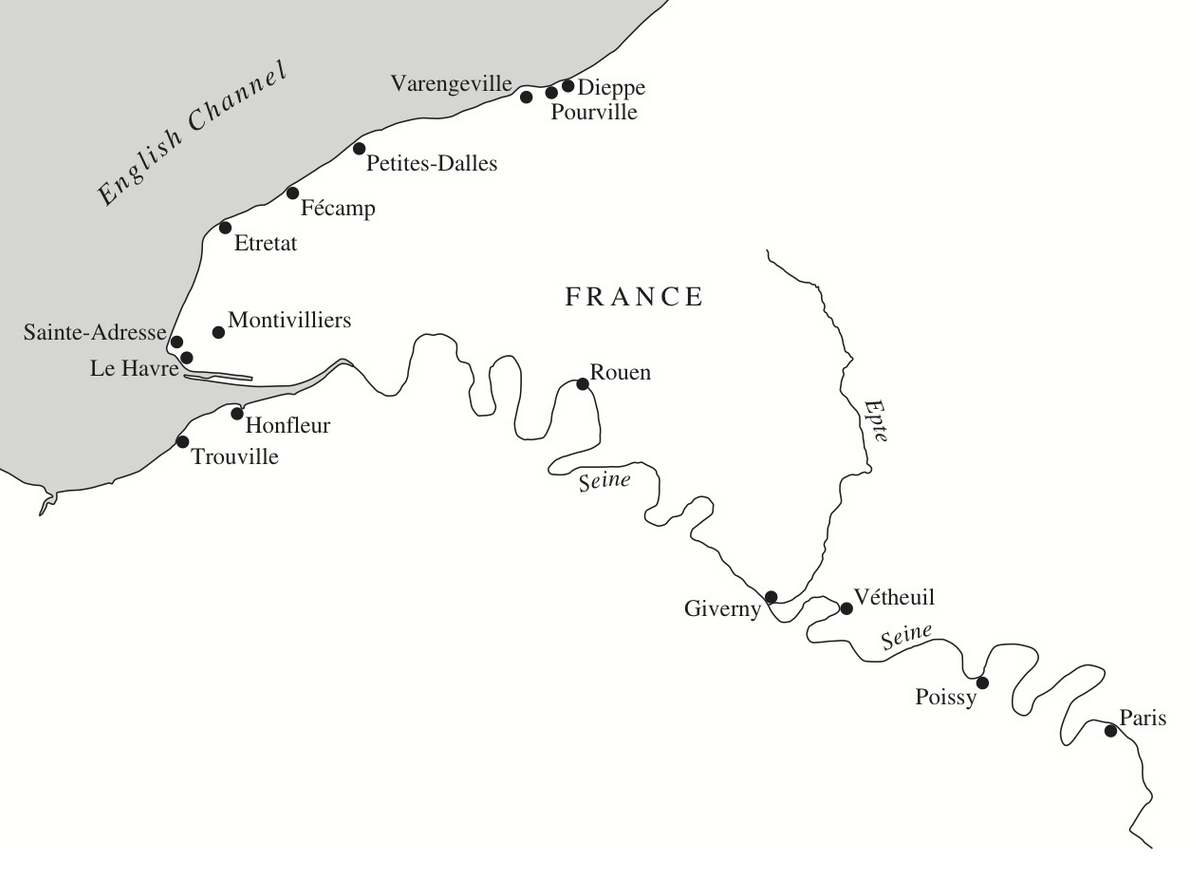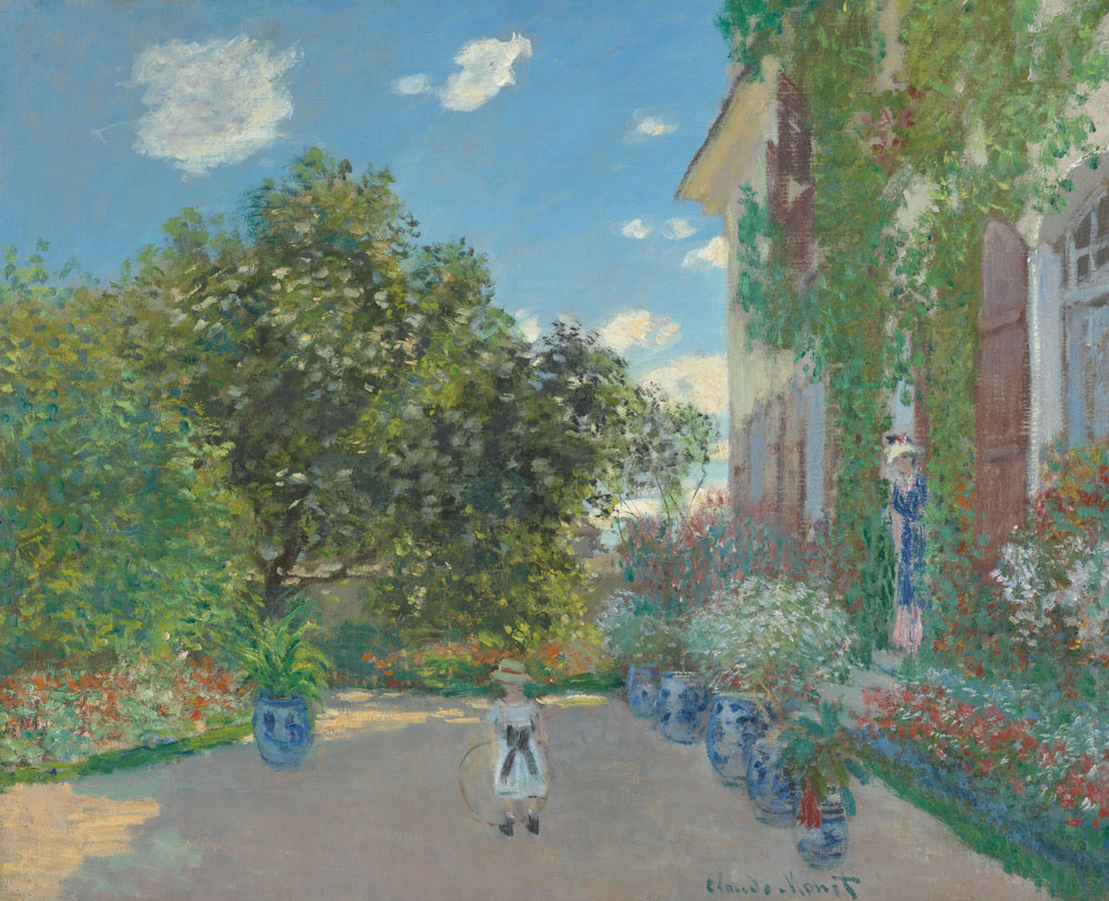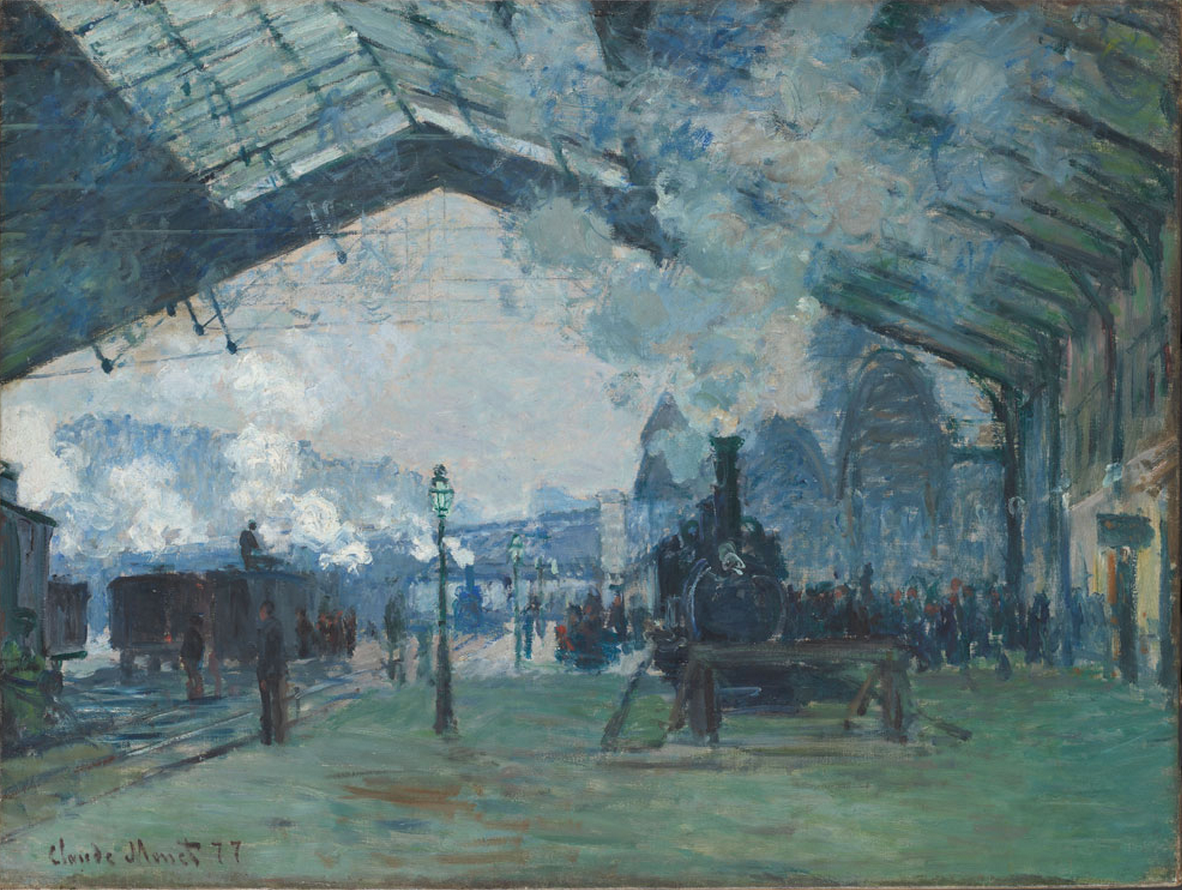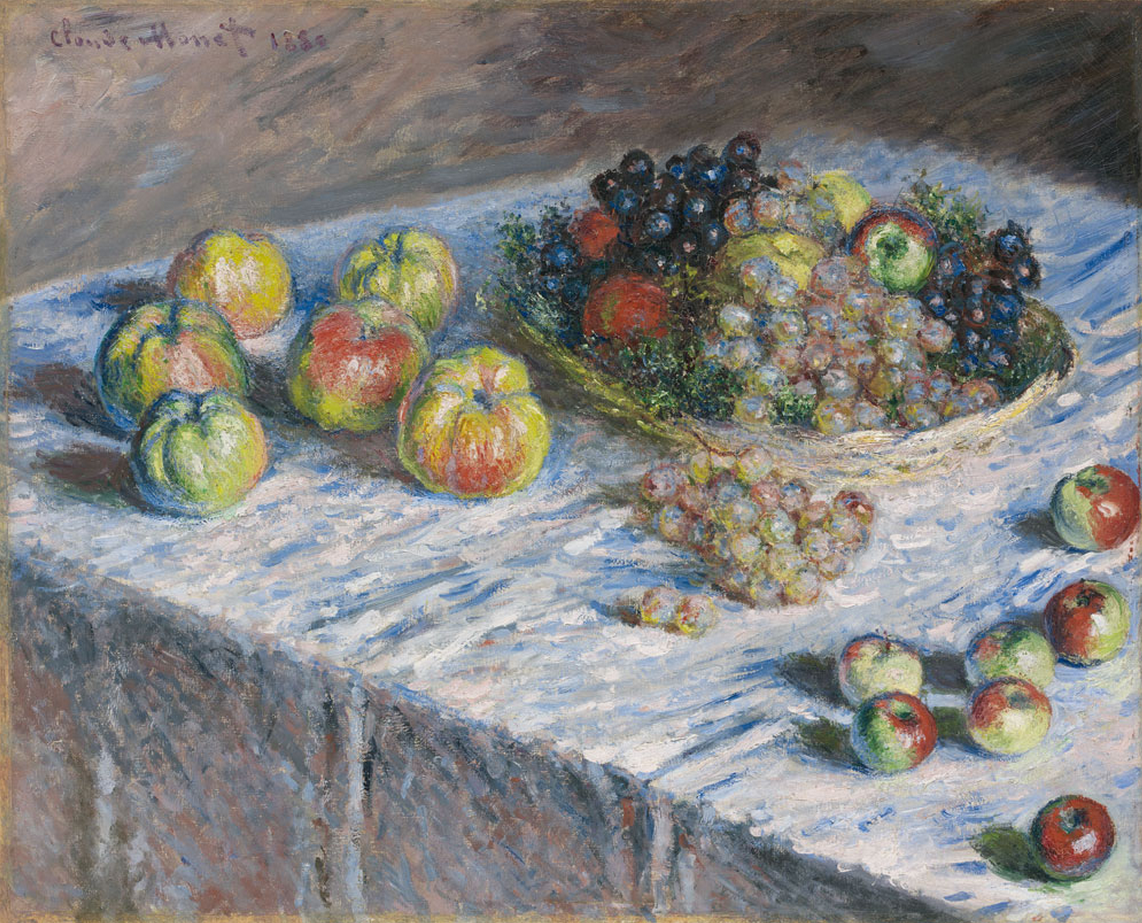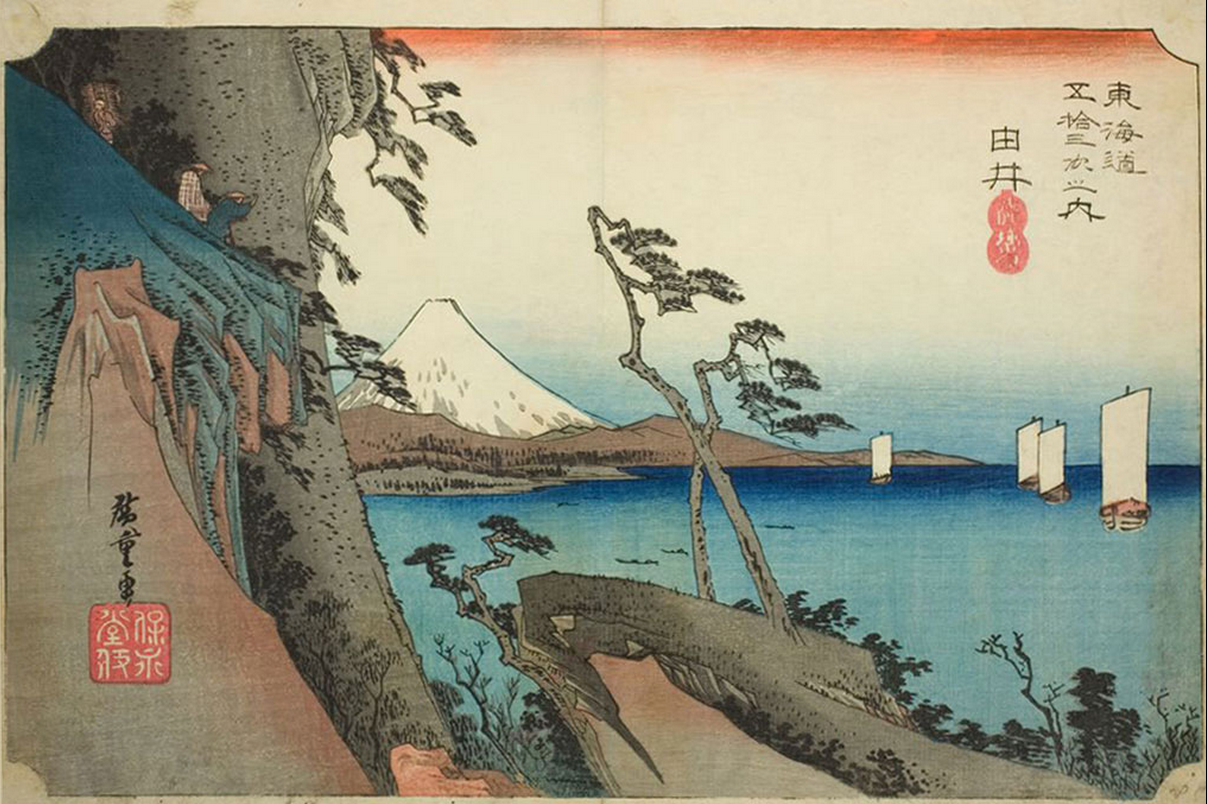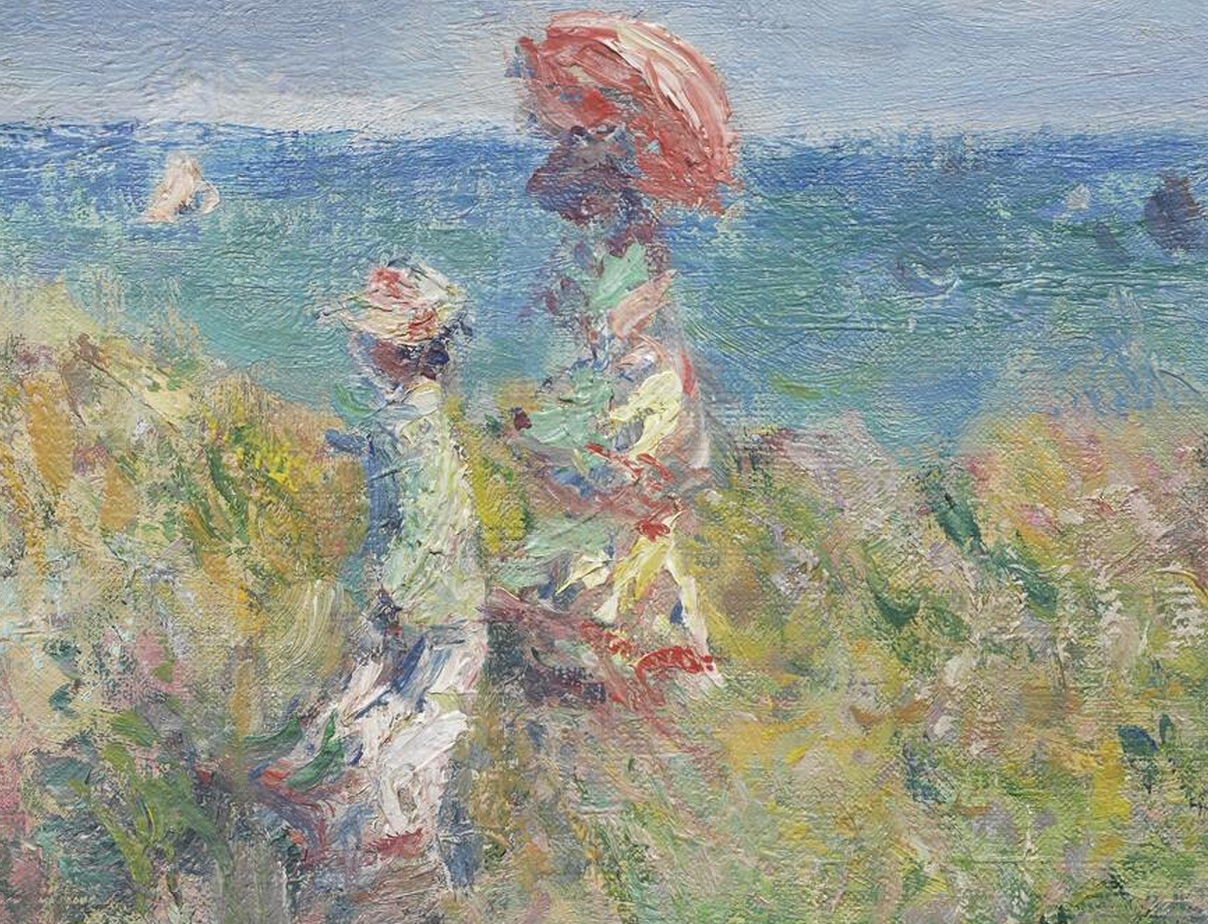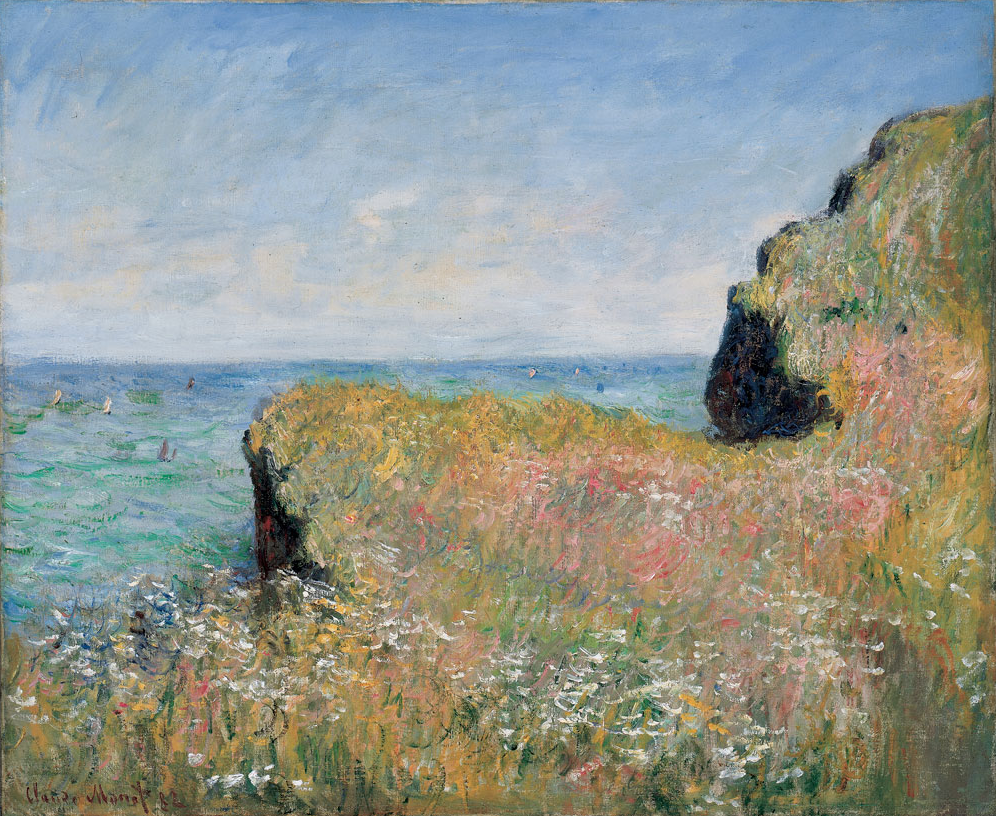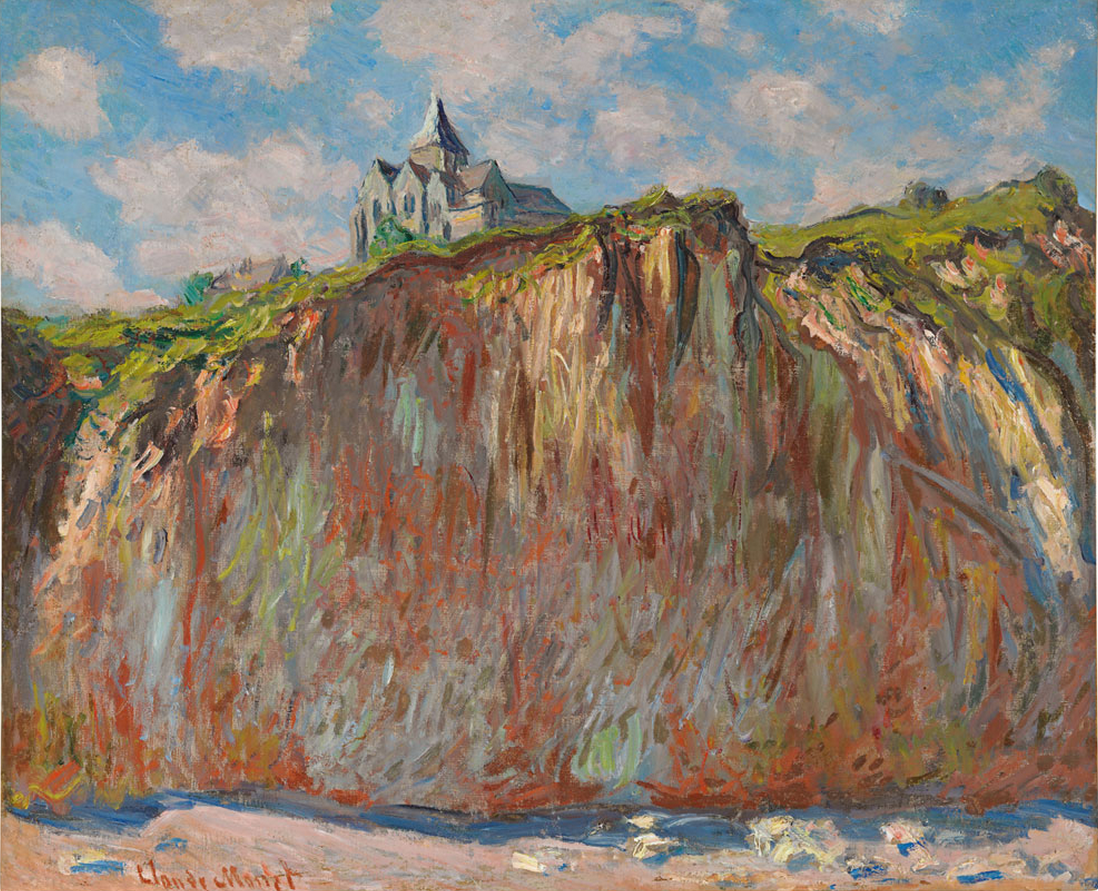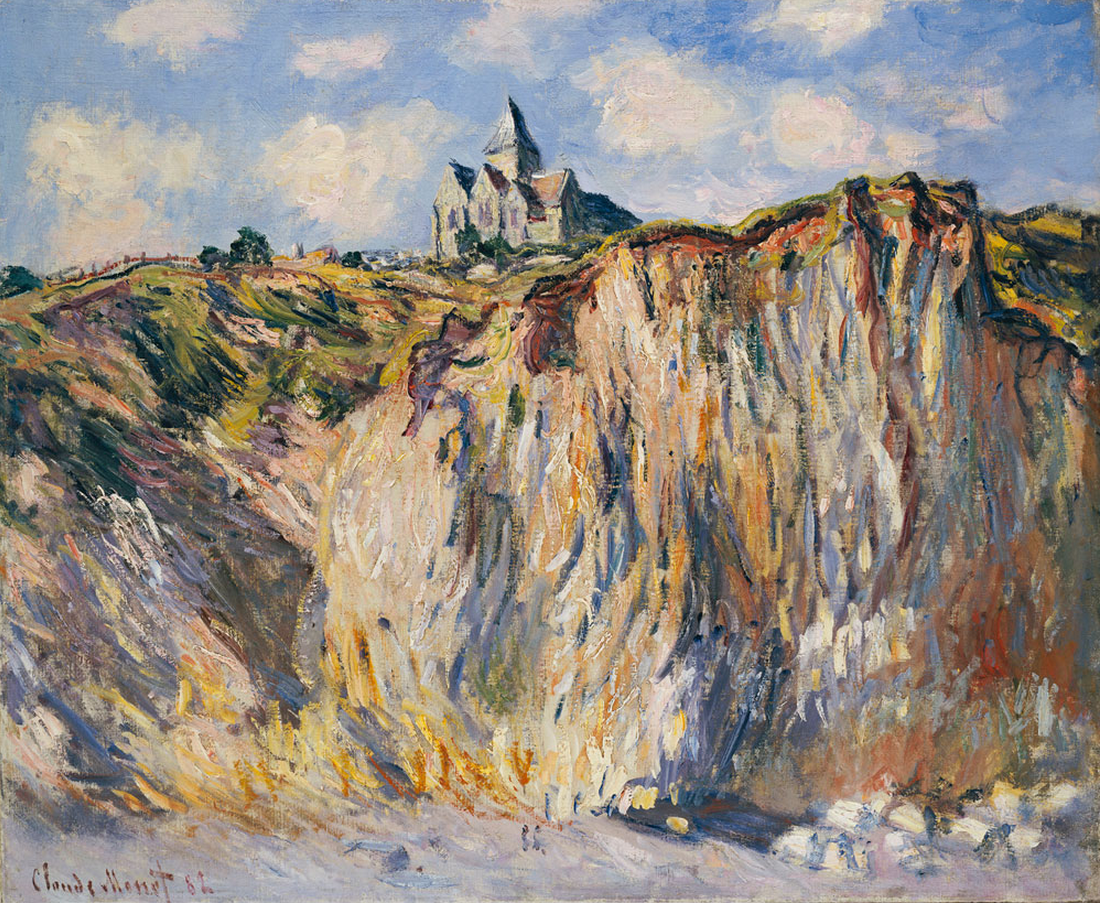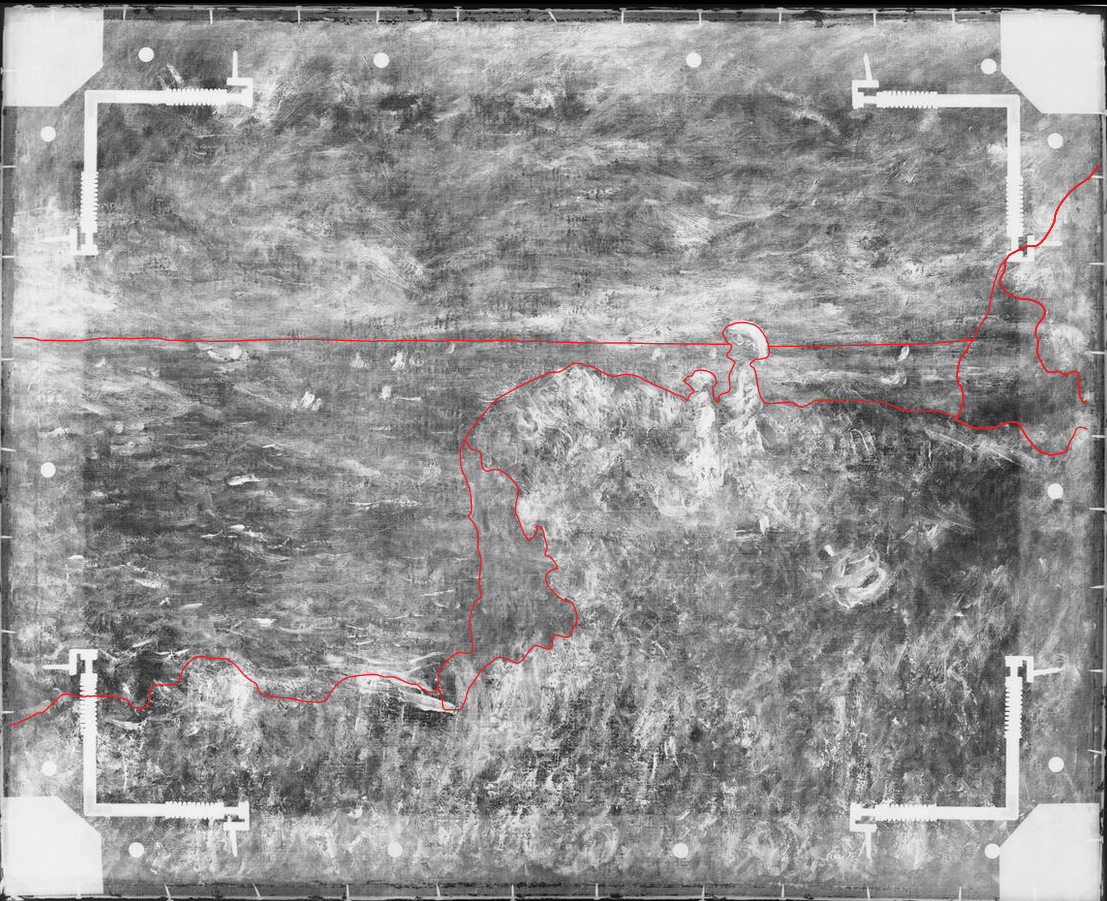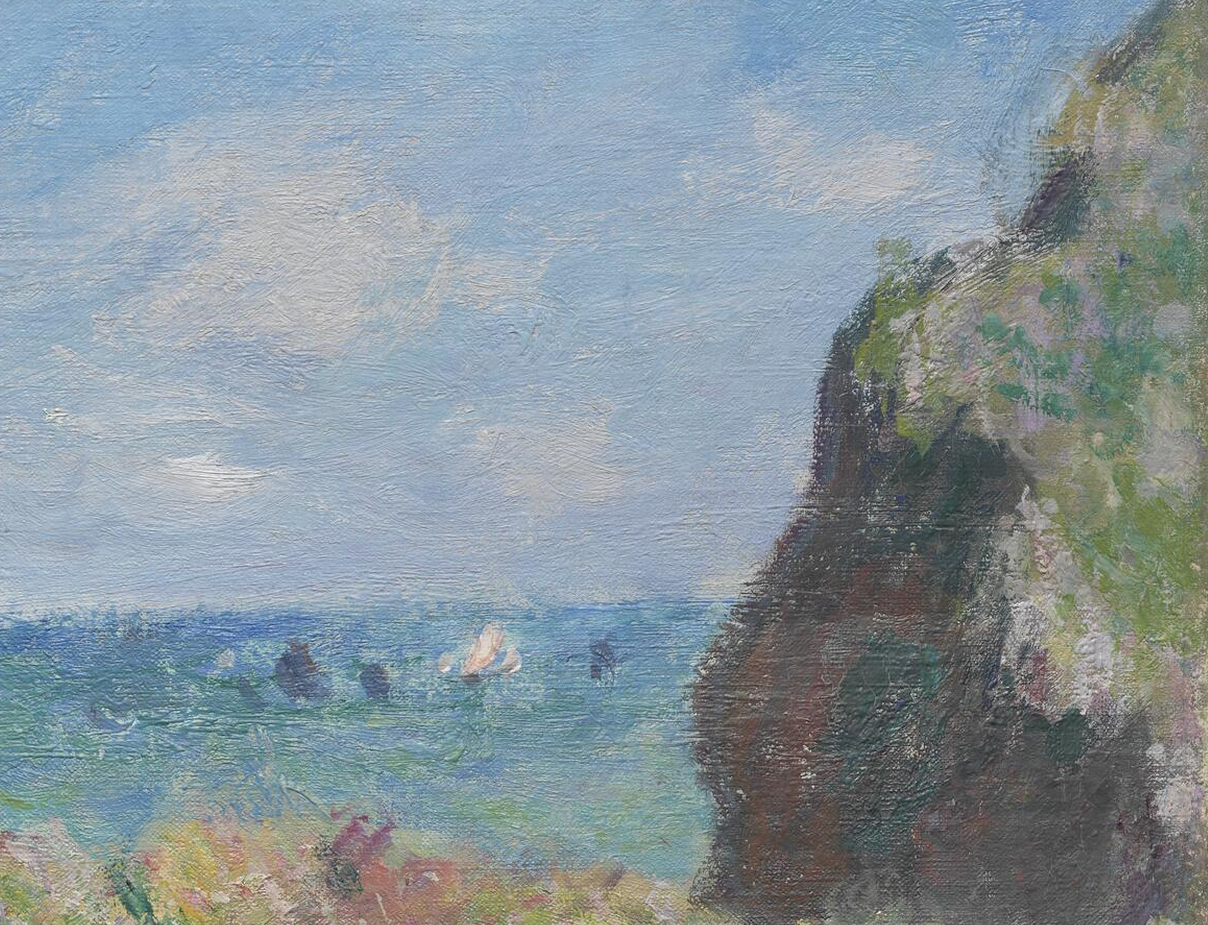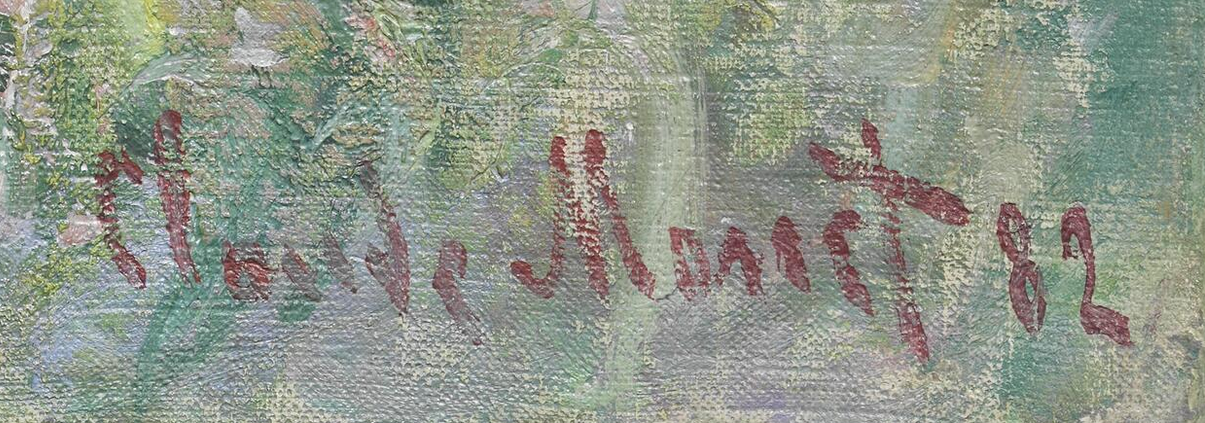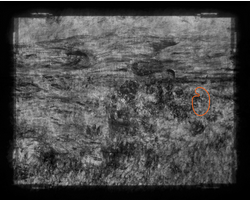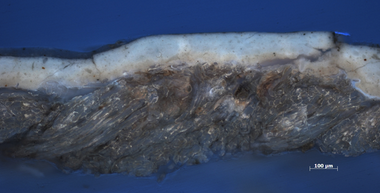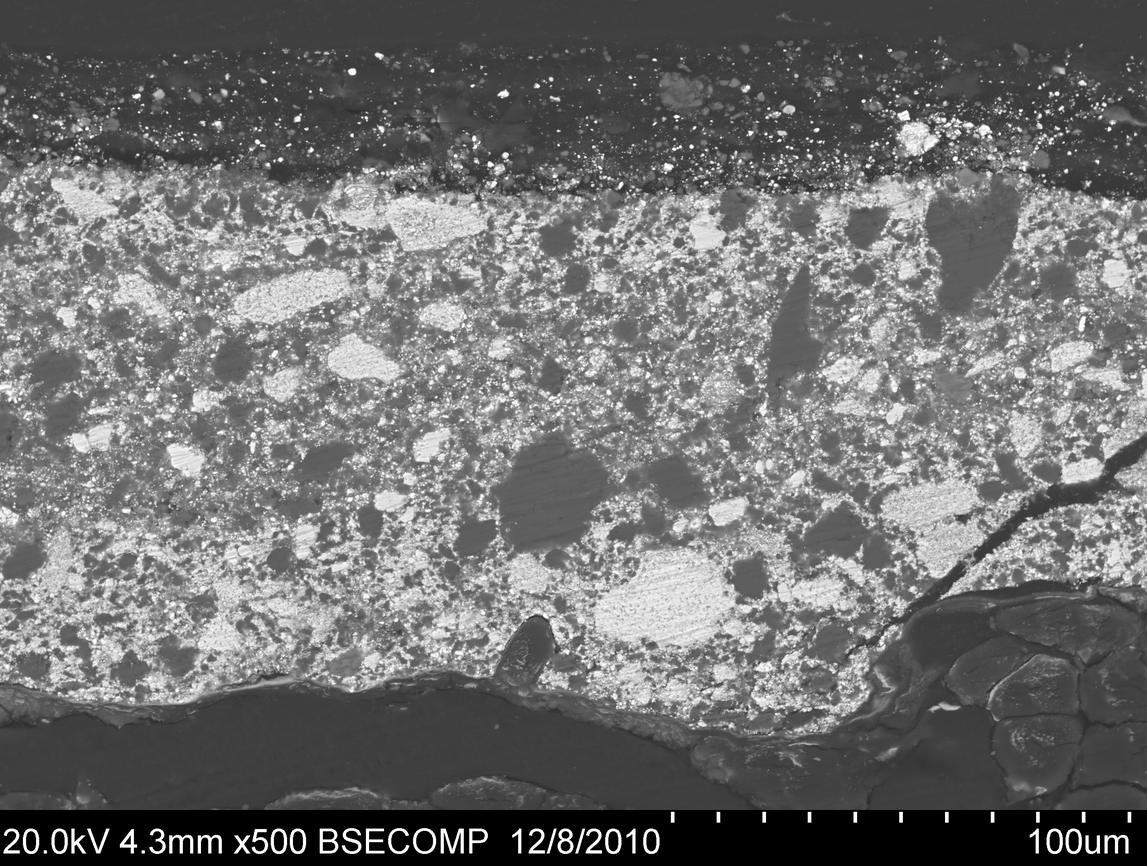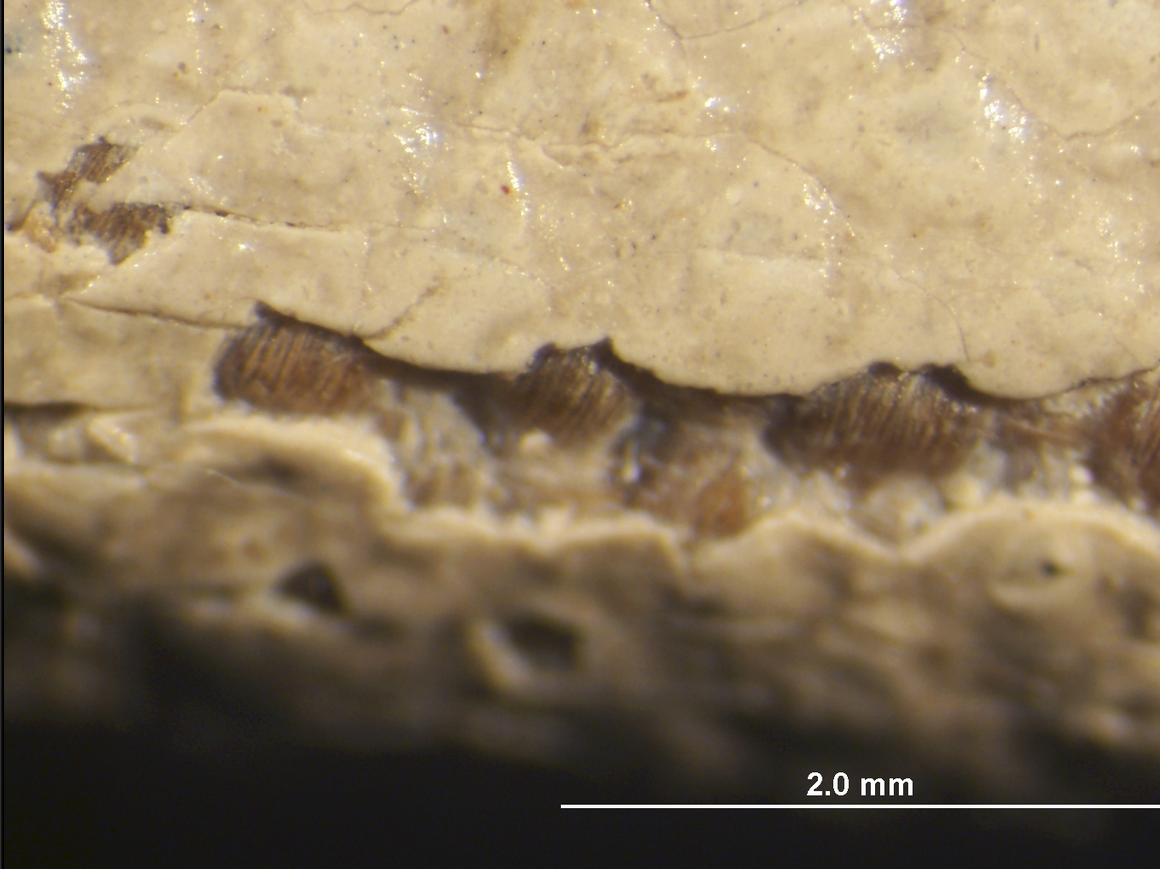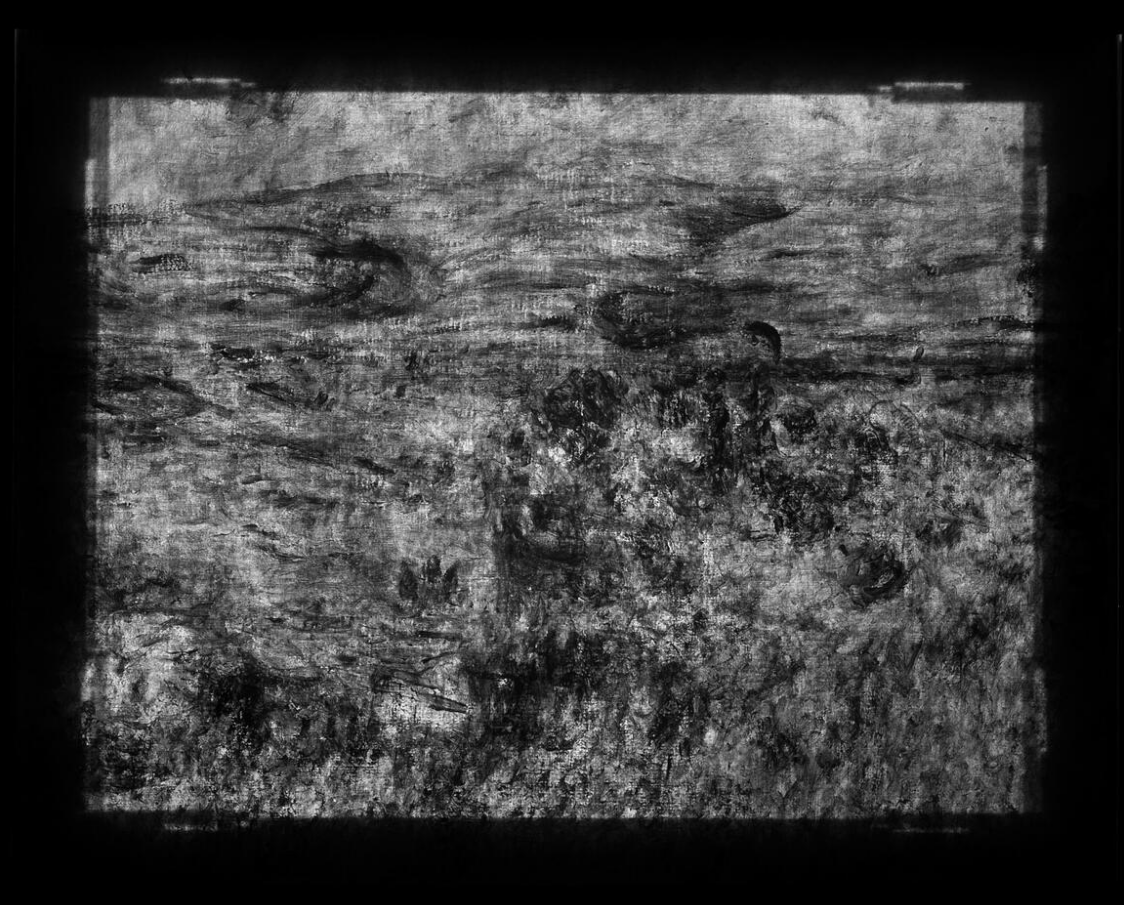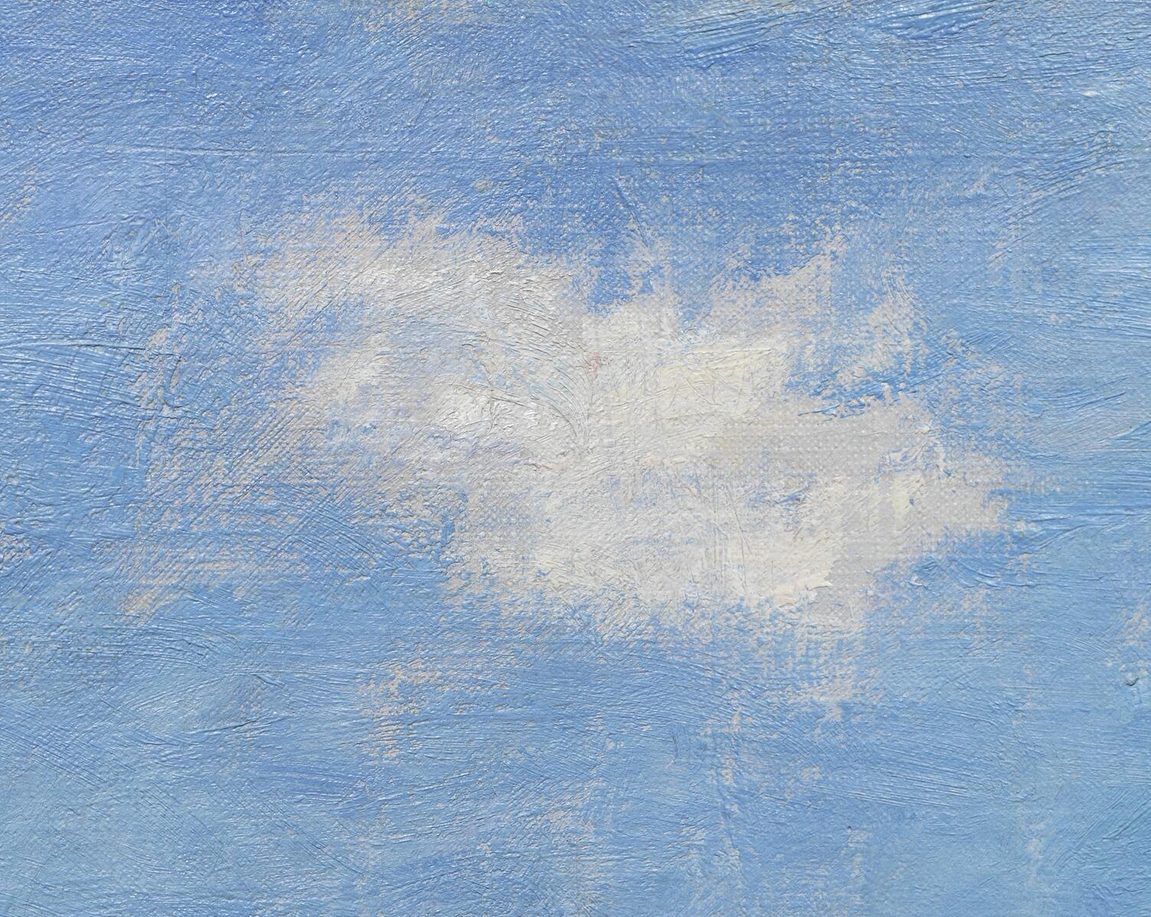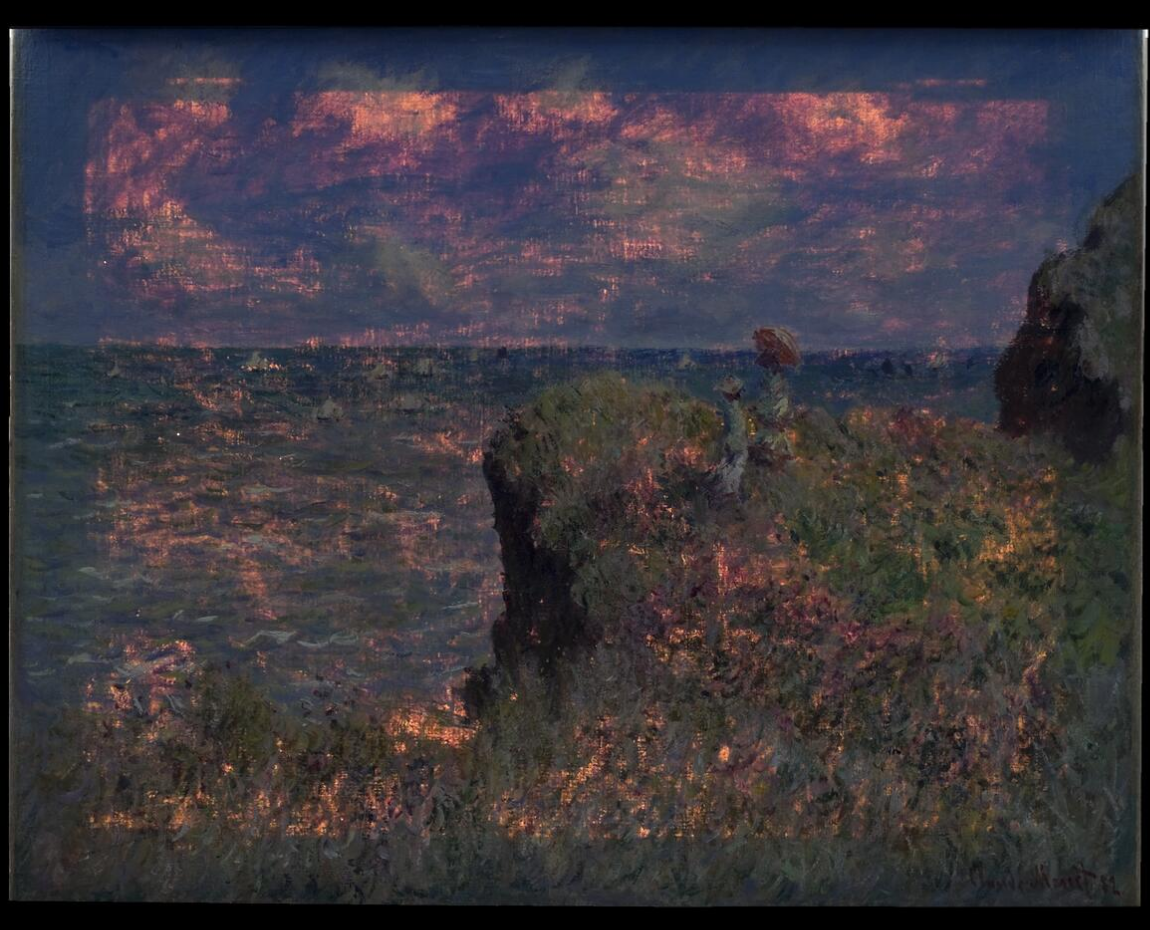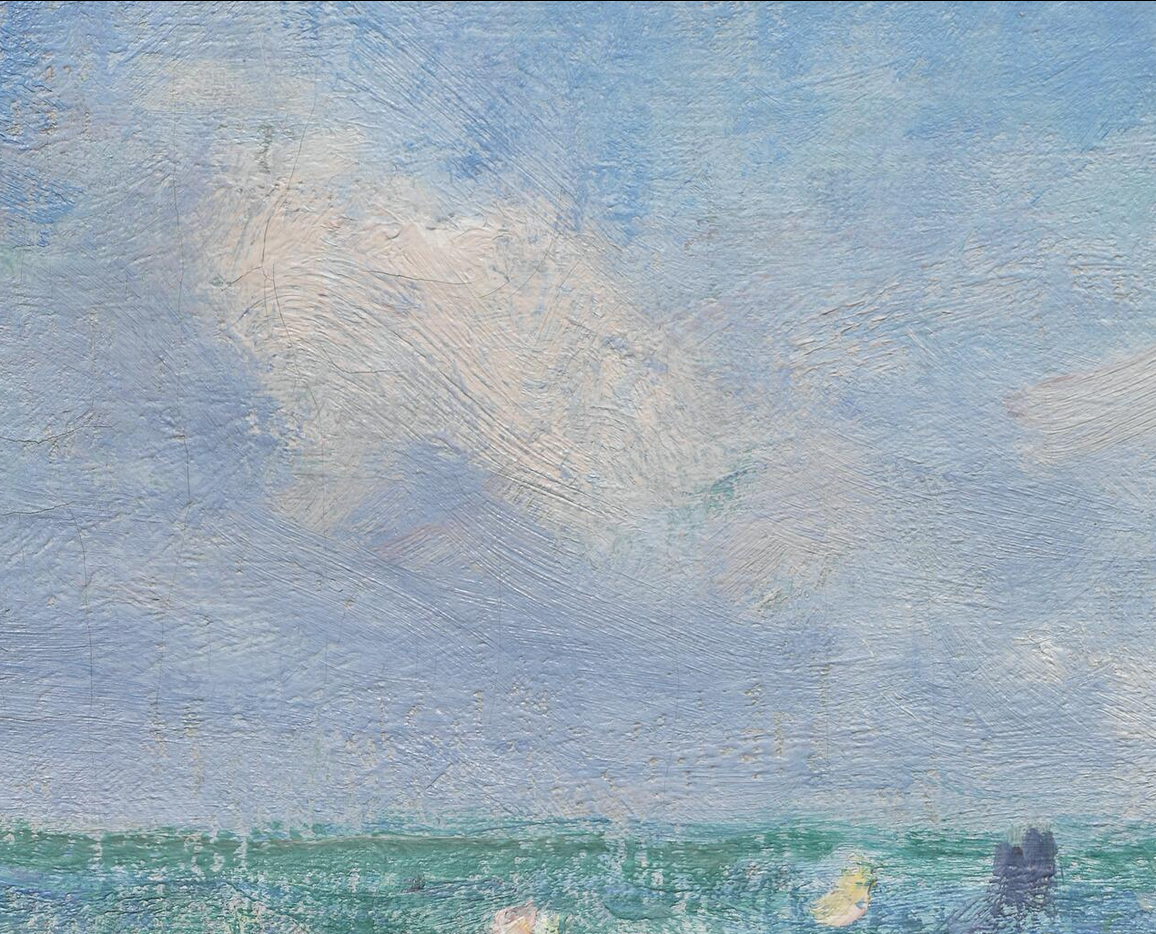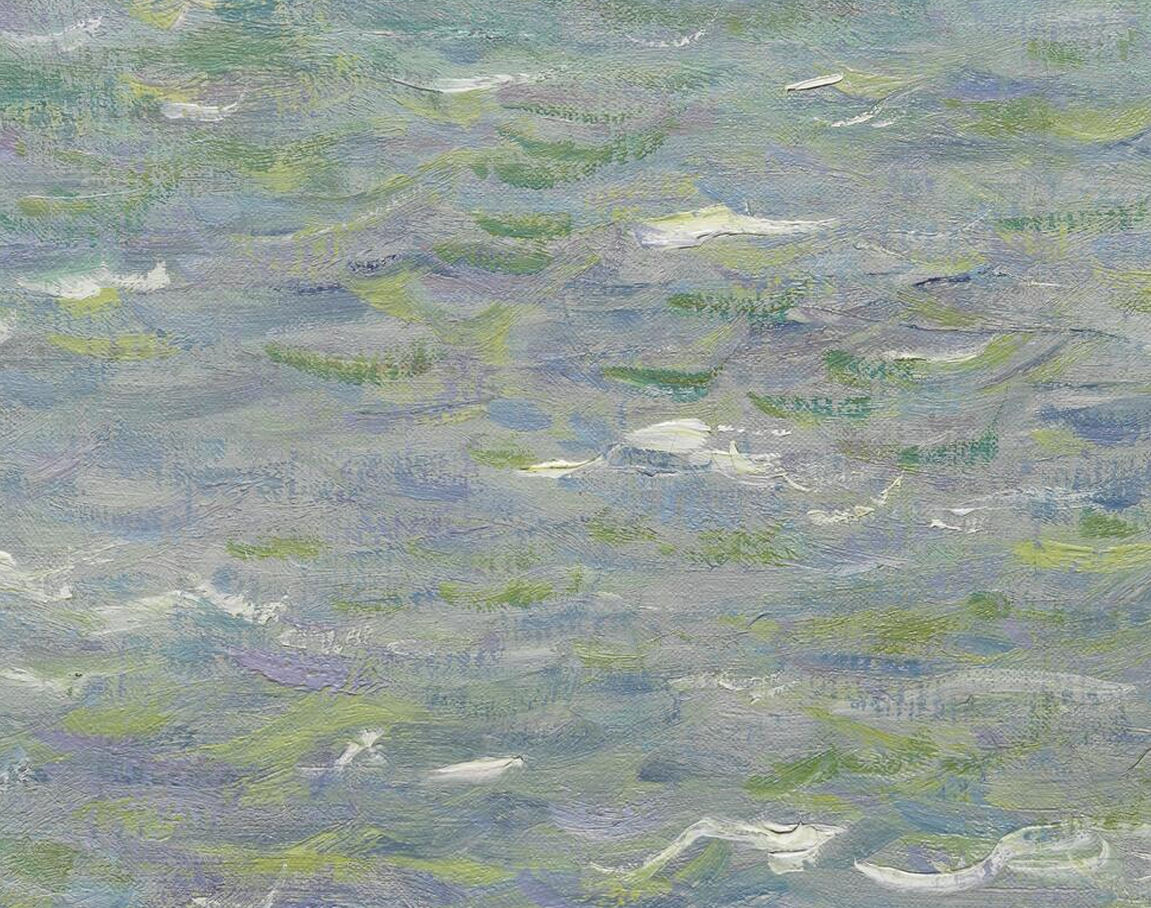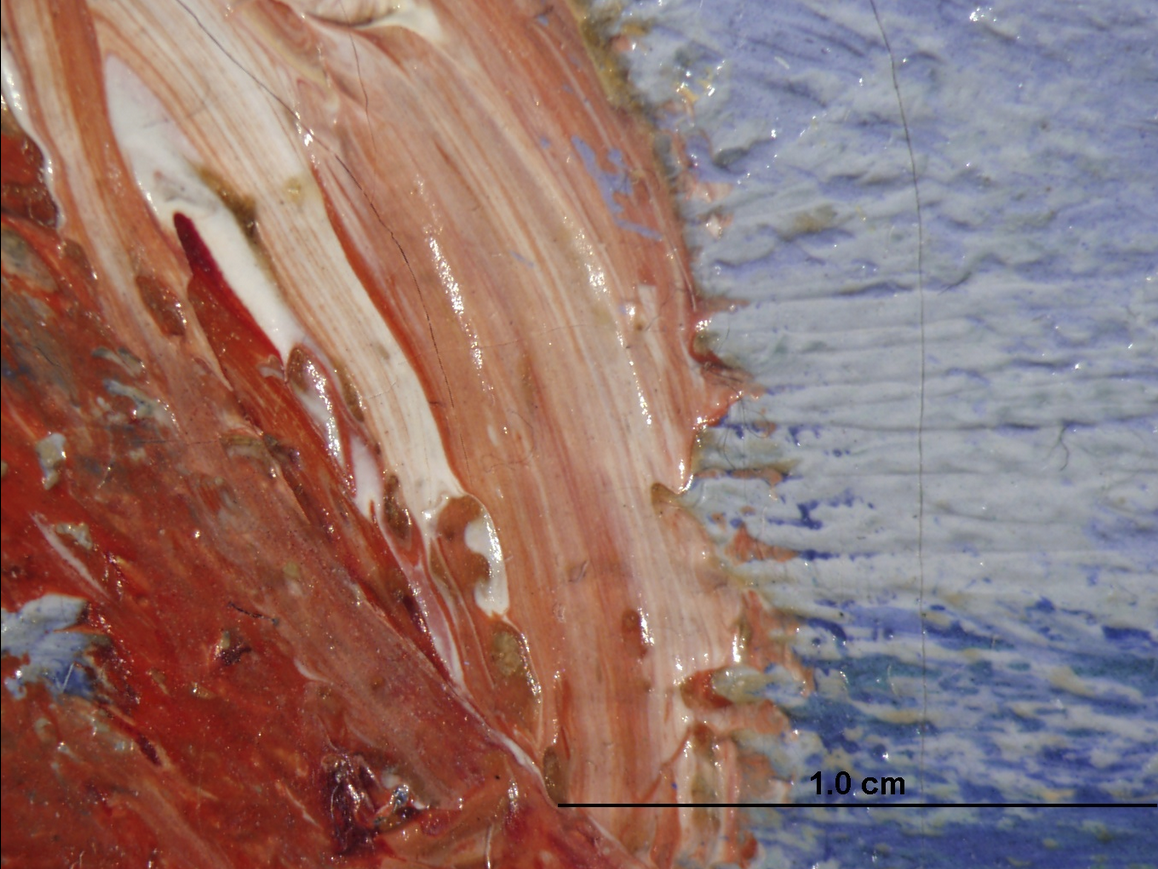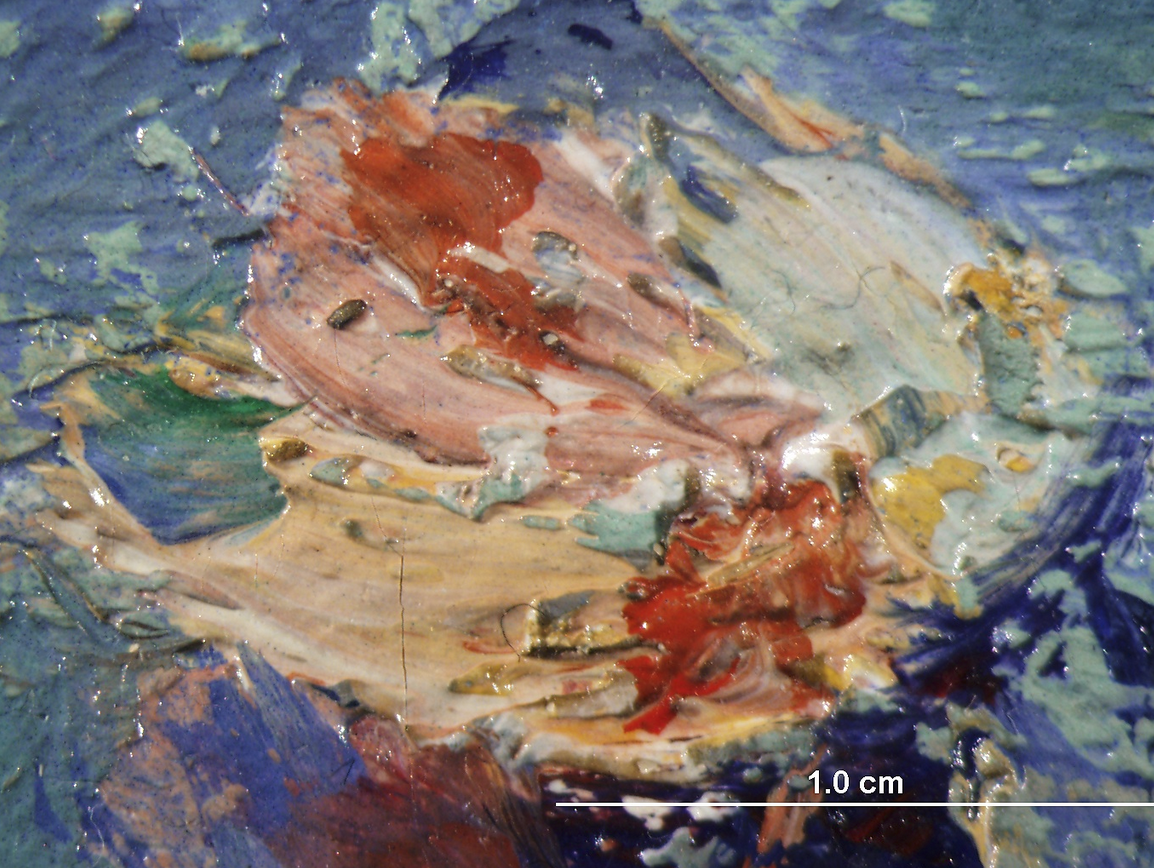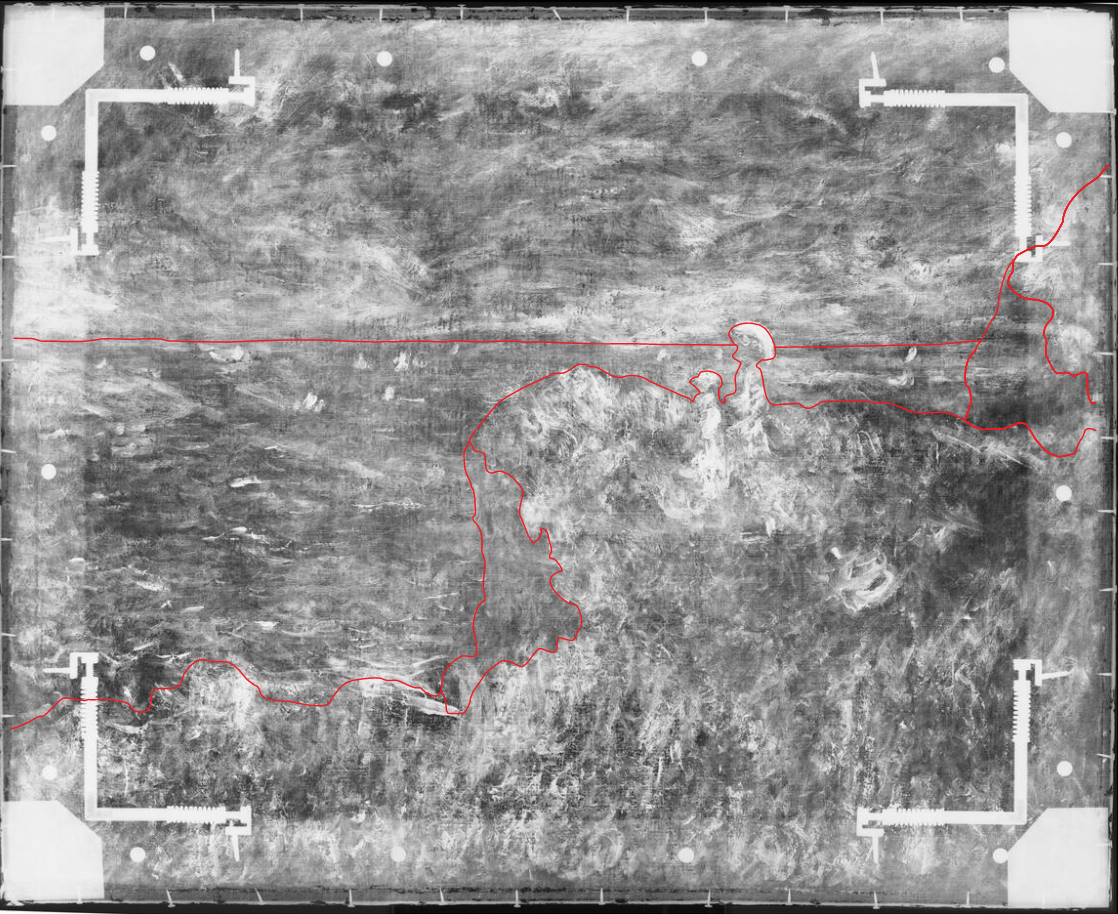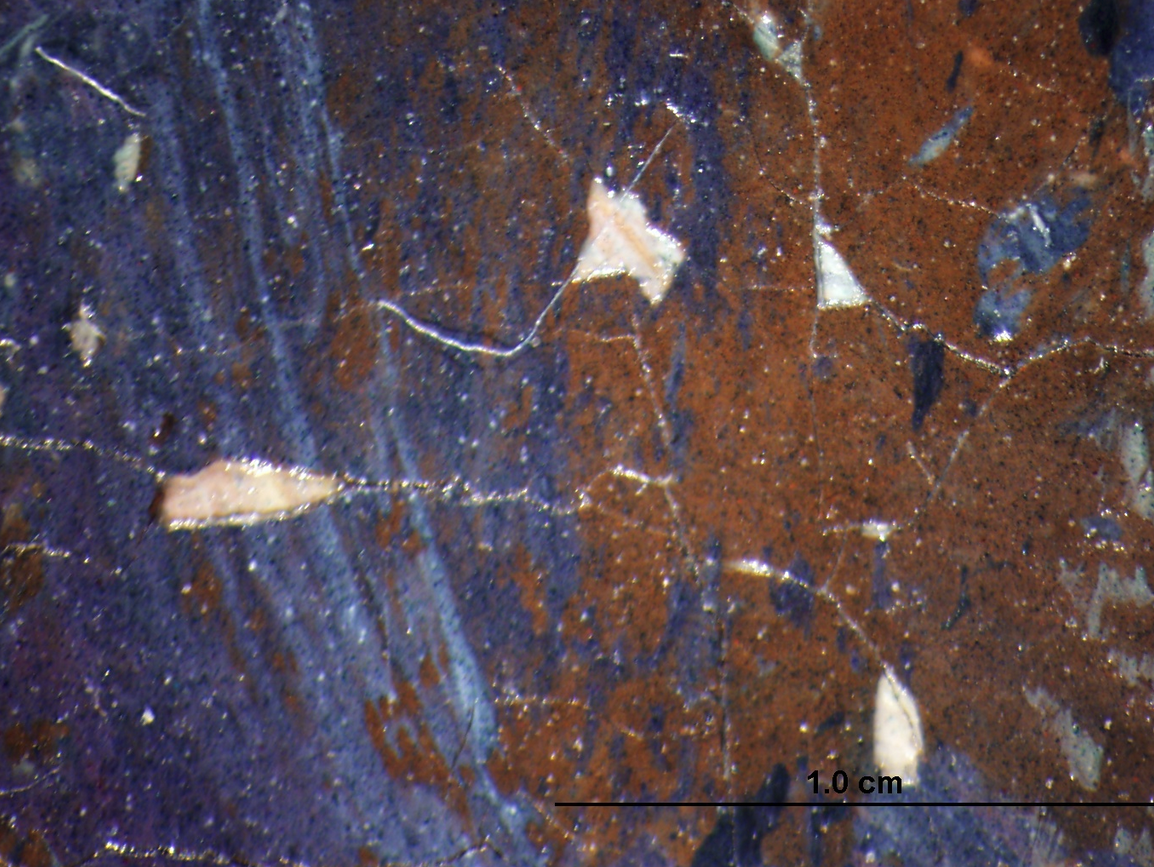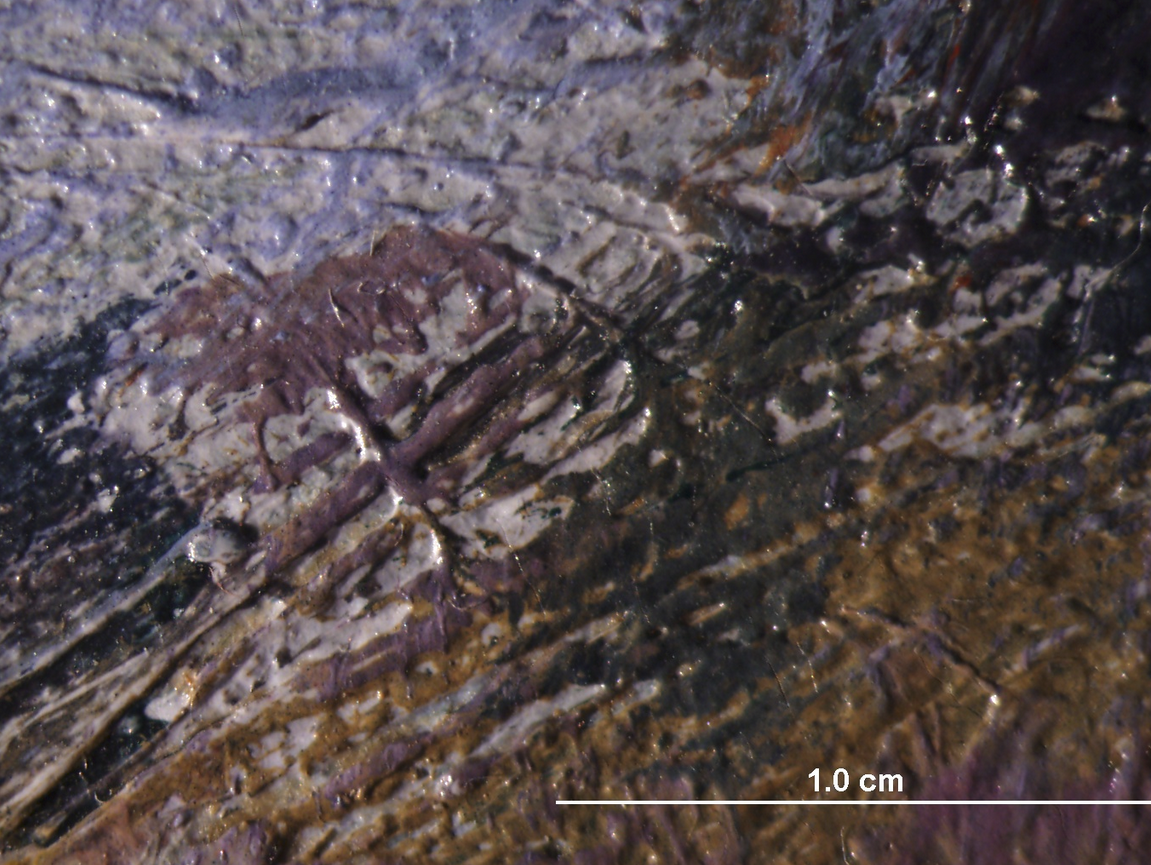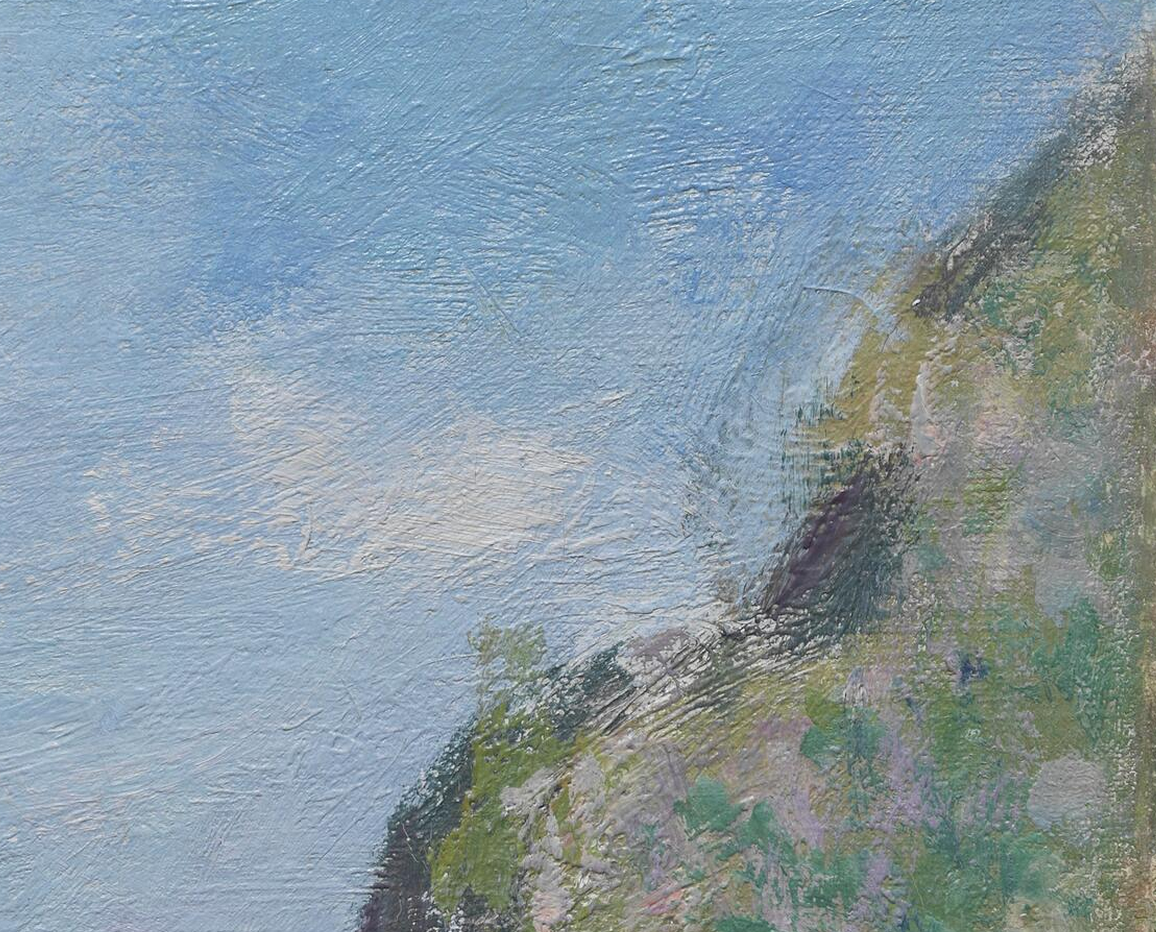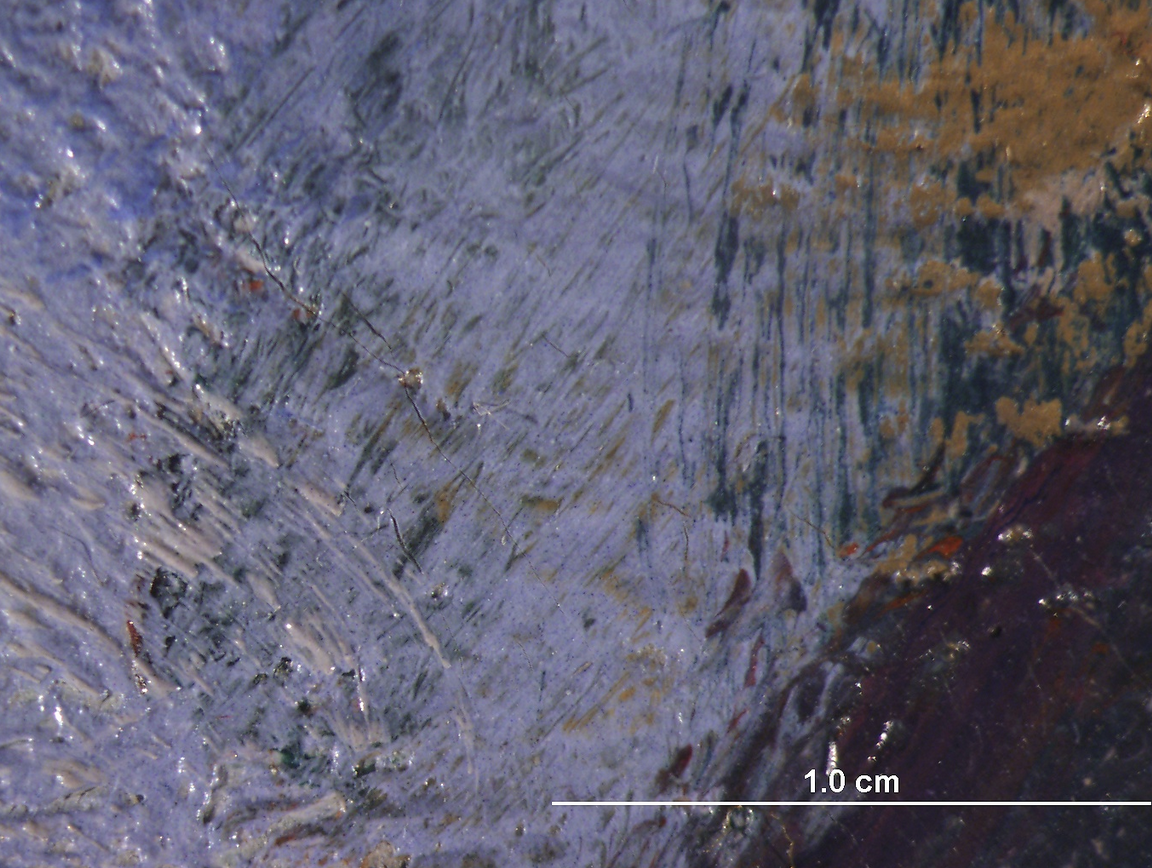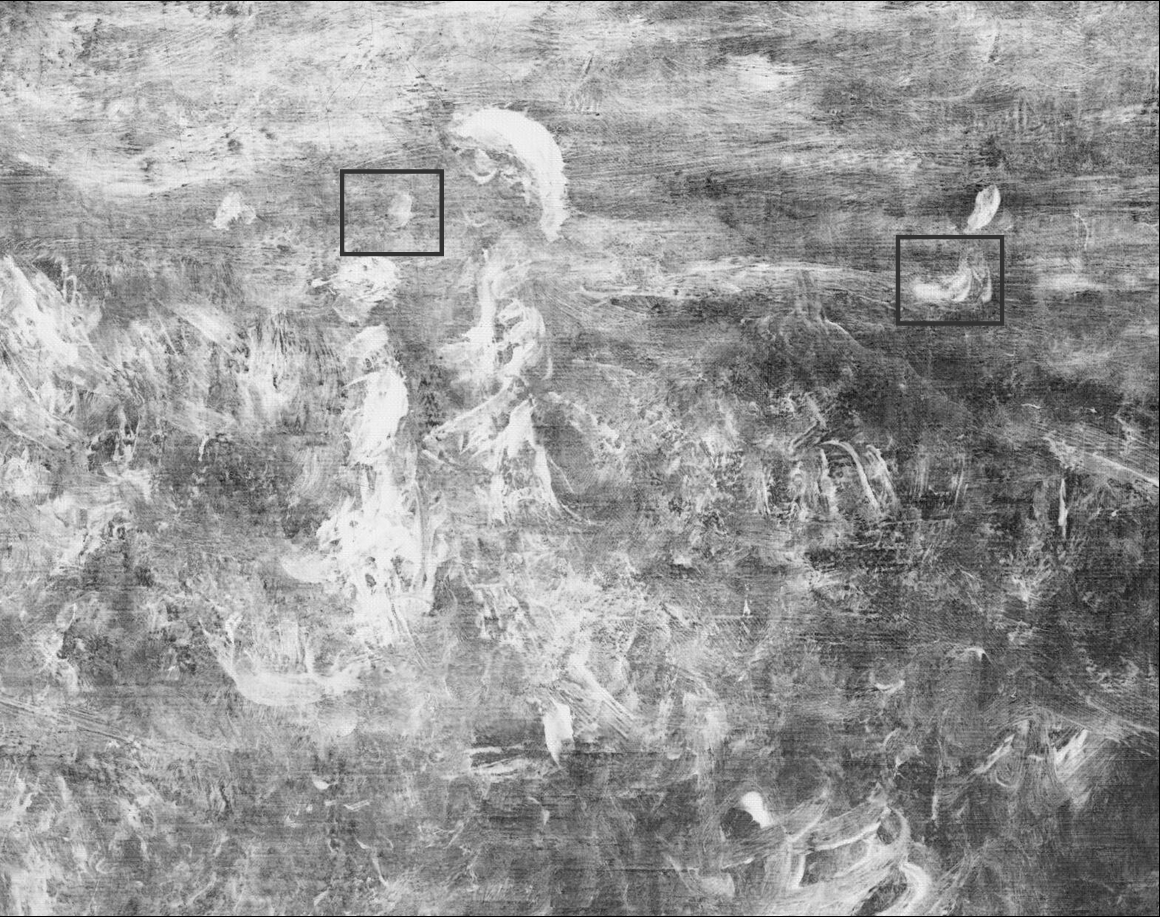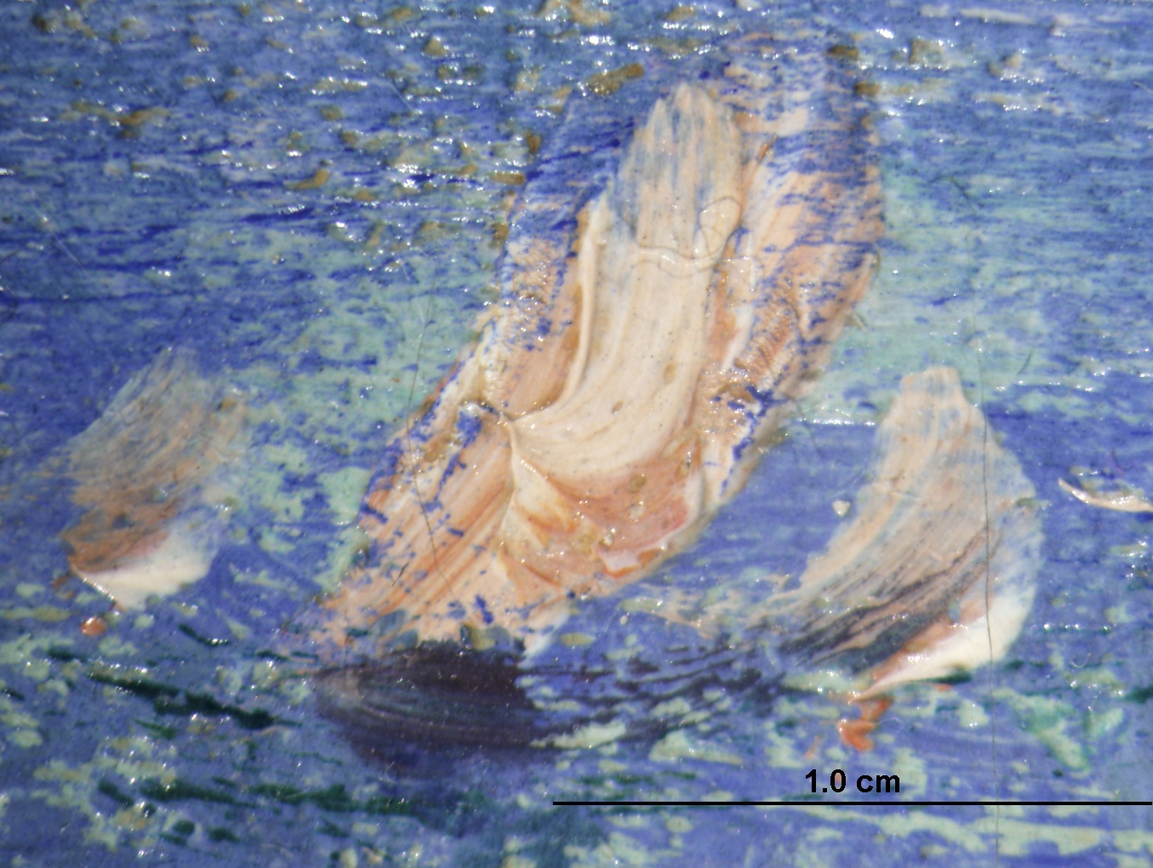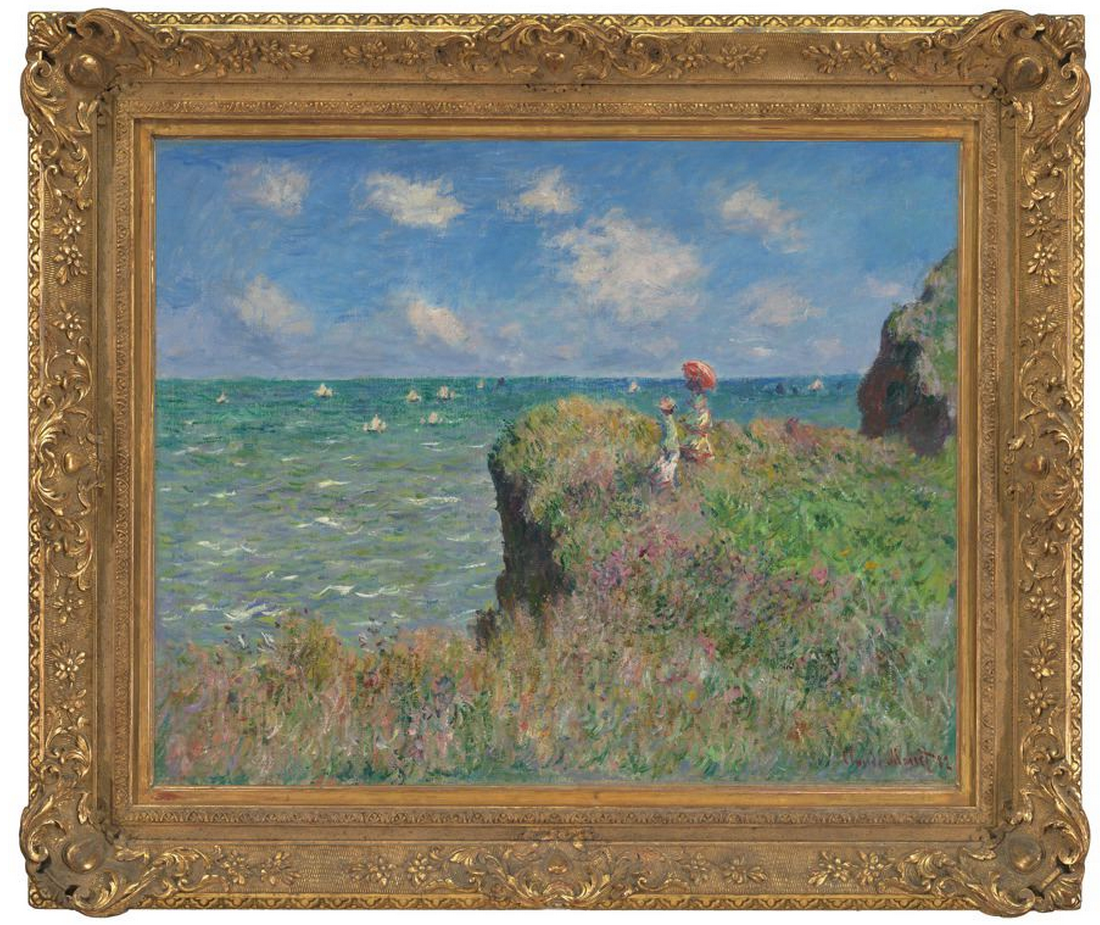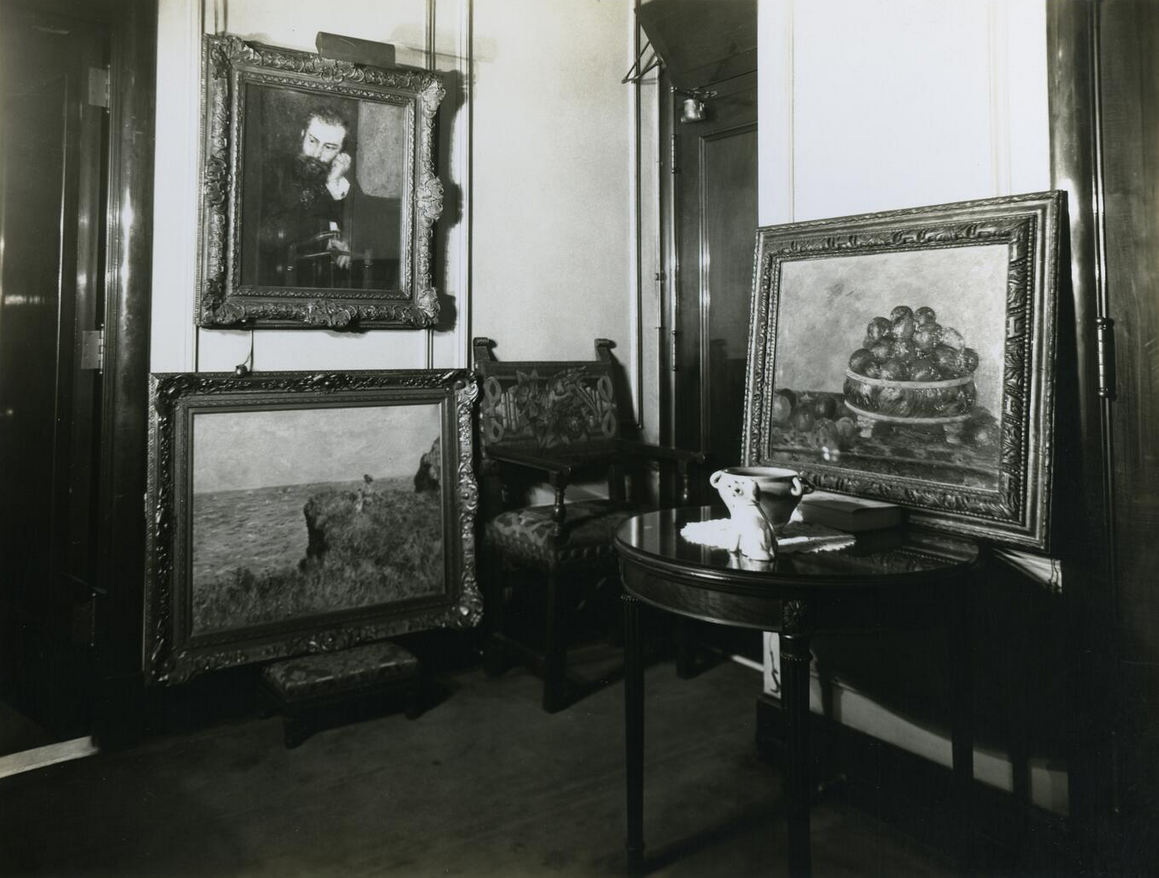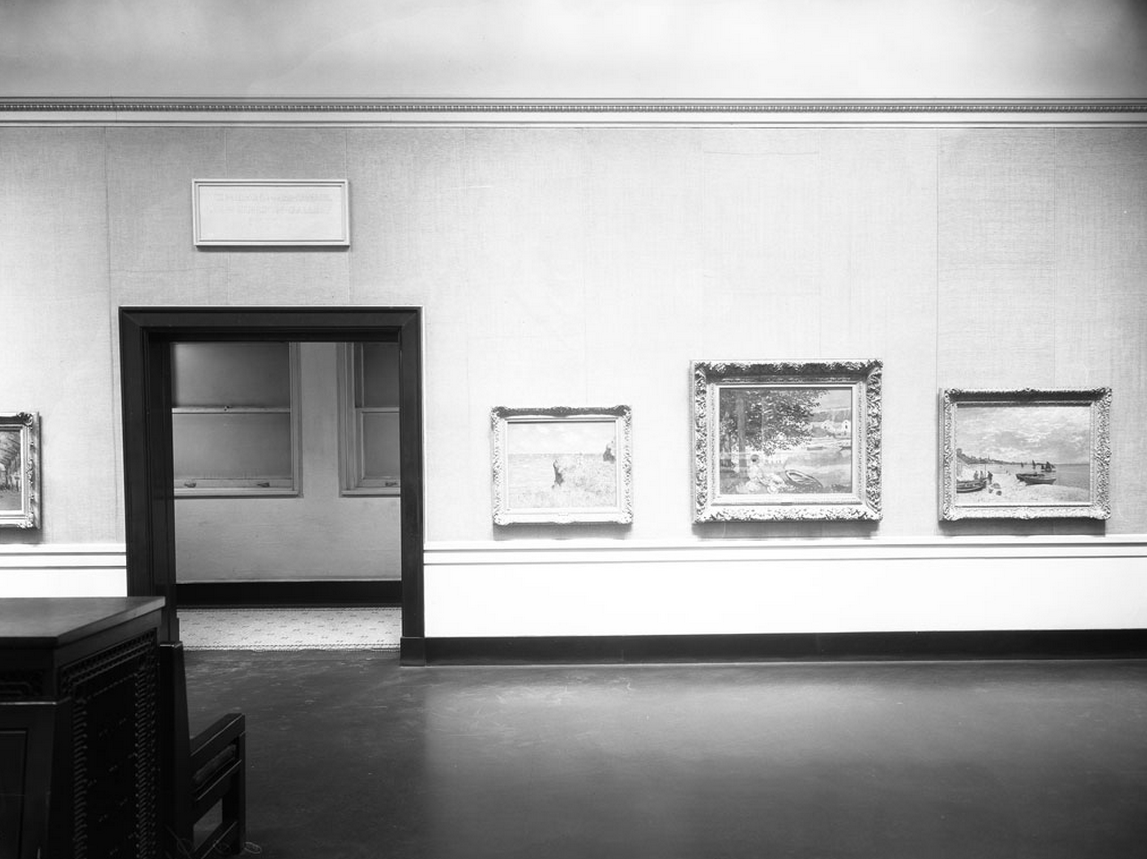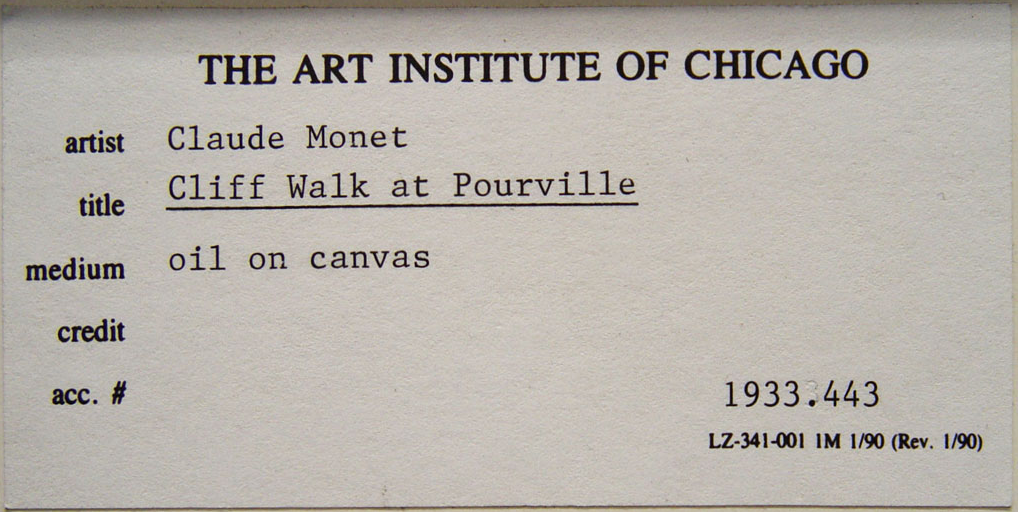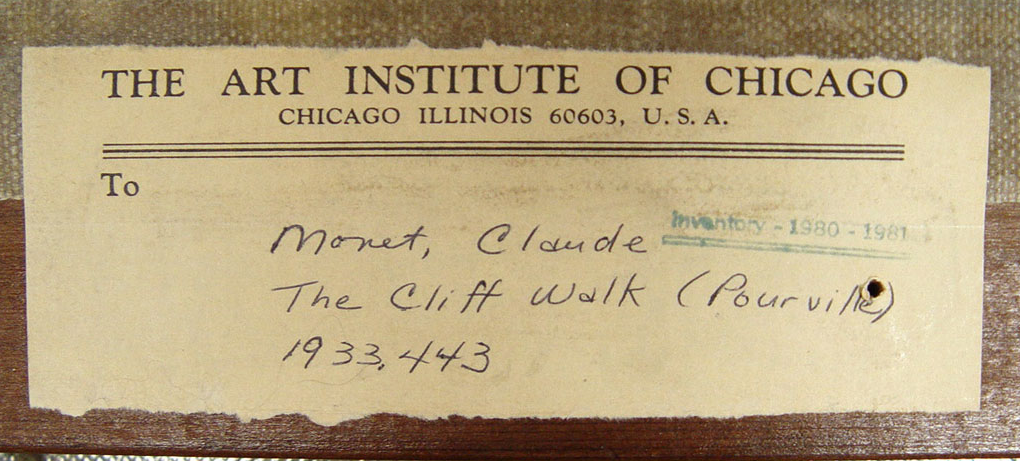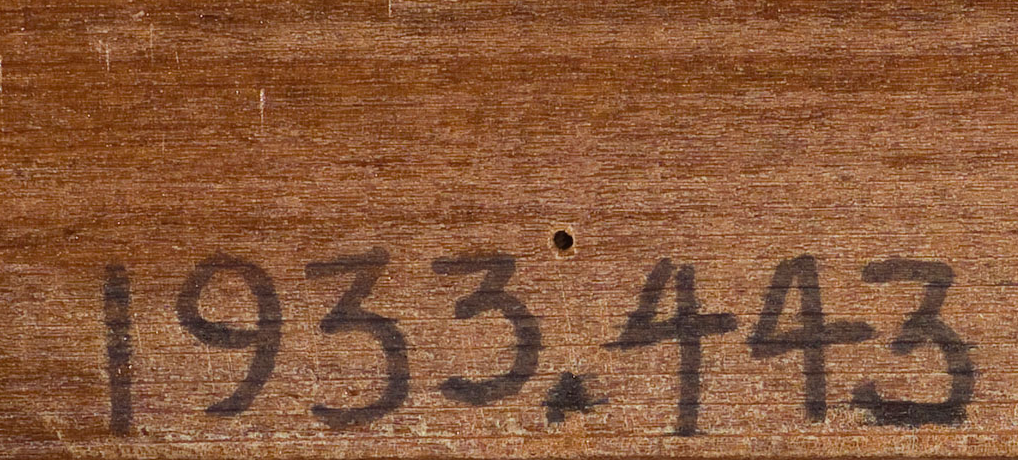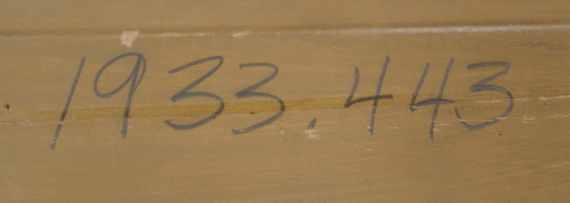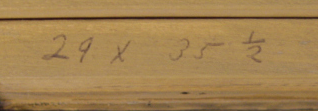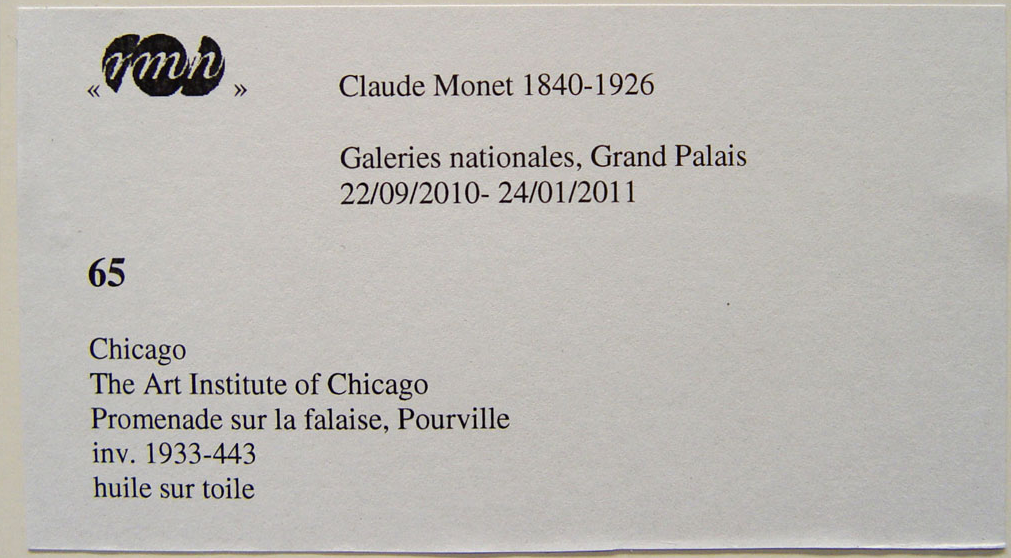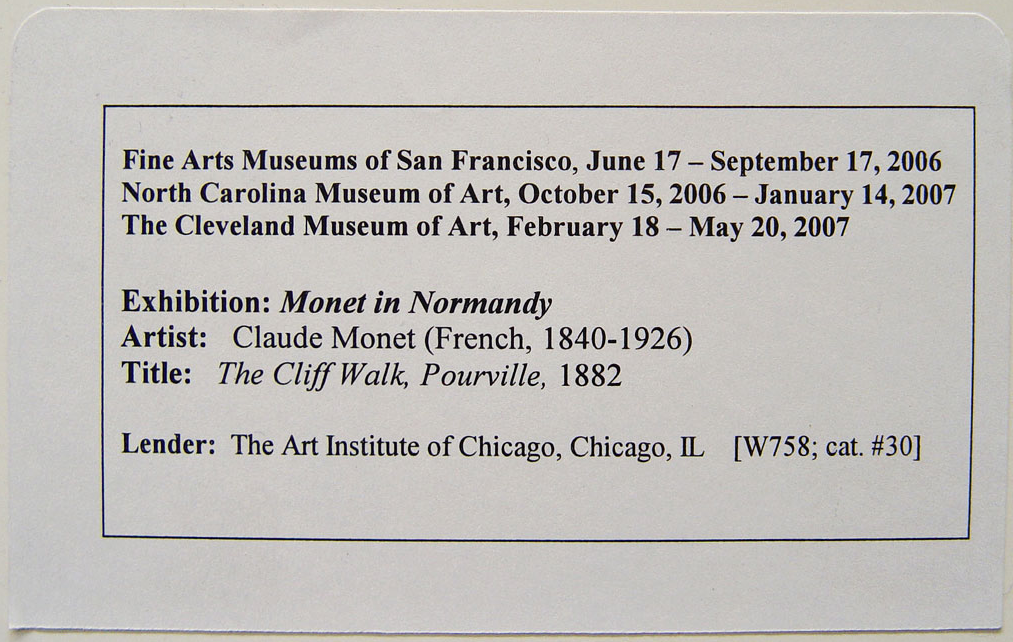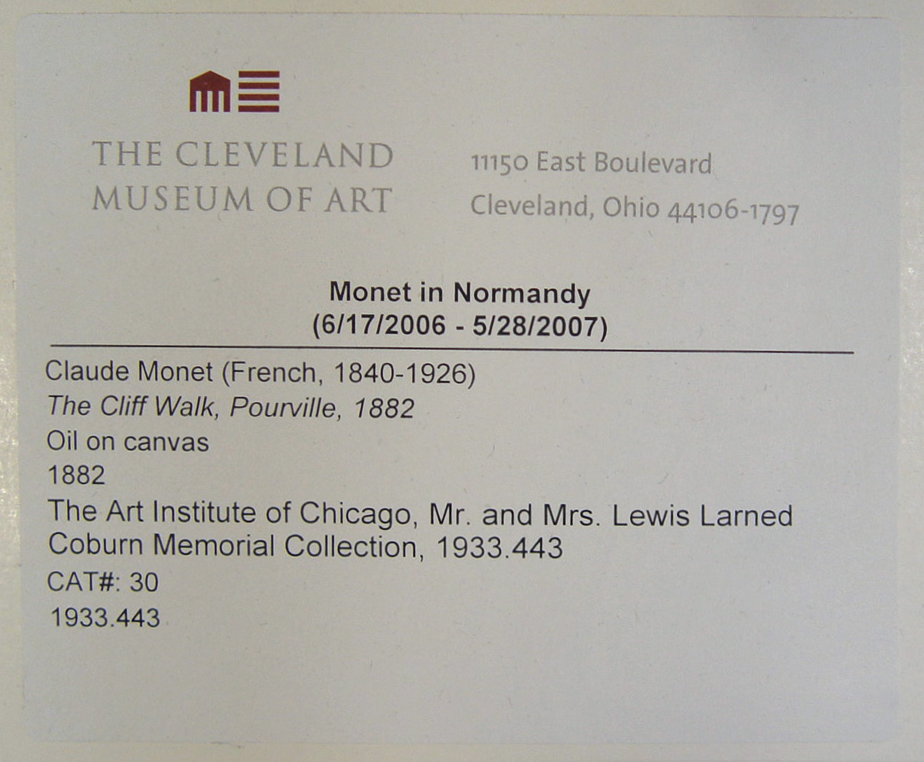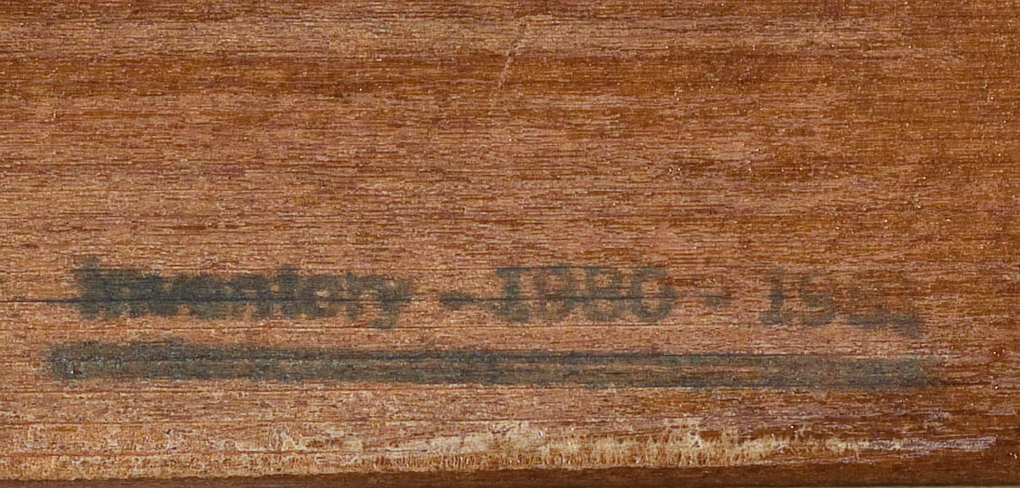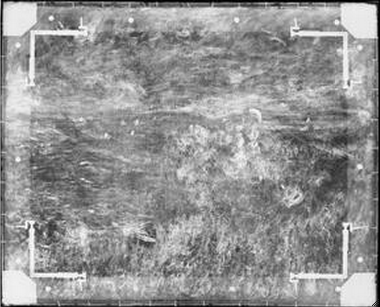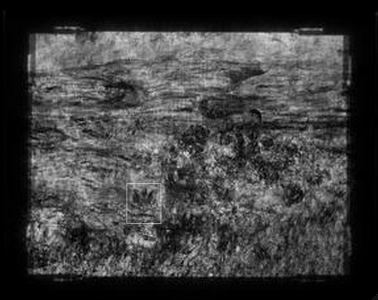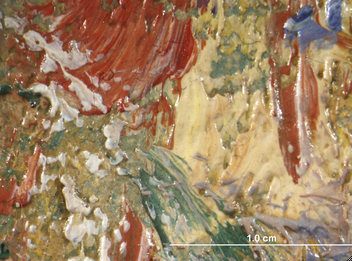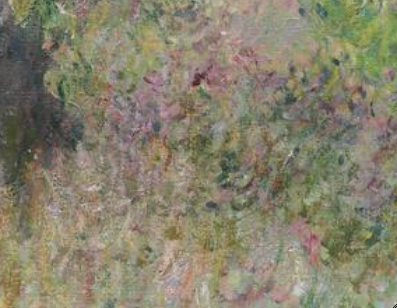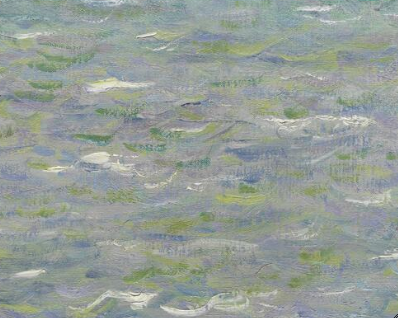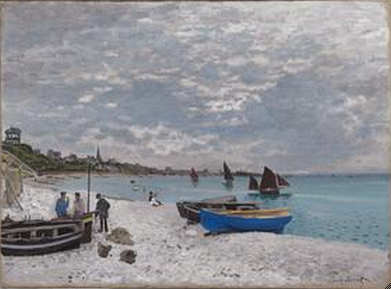Return to Normandy
Painted from a cliff top—probably at Val Saint-Nicolas, located between Pourville and Dieppe—Cliff Walk at Pourville is one of nearly one hundred canvases that Monet painted along the coast of Normandy in 1882 (fig. 19.1). This cycle of works was part of the artist’s revived interest in painting the English Channel between the early and mid-1880s. Monet was certainly no stranger to the coast, as exemplified by his 1867 painting The Beach at Sainte-Adresse (fig. 19.2 [cat. 13] [W92]). But for much of the 1870s, he had been preoccupied with painting the sites and activities of the urban and suburban Parisian landscape in works such as The Artist’s House at Argenteuil (fig. 19.3 [cat. 15] [W284]) and Arrival of the Normandy Train, Gare Saint-Lazare (fig. 19.4 [cat. 16] [W441]). With his move to Vétheuil (about forty miles northwest of Paris) in 1878 and the death of his wife, Camille, in 1879, however, Monet shifted focus. He retreated from his depictions of the city and suburbs and began painting the terrain around Vétheuil, as well as a few still lifes—including the Art Institute’s Apples and Grapes (fig. 19.5 [cat. 17] [W546])—and numerous scenes of Normandy’s cliff-filled coastal sites and shorelines, especially at Fécamp, Dieppe, Pourville, Varengeville, and Étretat.
Departing from his home base in Poissy—where he had recently relocated with Alice Hoschedé (the wife of his former patron Ernest Hoschedé, whom he would marry in 1892, after her husband’s death) and their families—Monet visited the coast twice in 1882, from early February to mid-April and from mid-June to early October. Because most of the paintings from these trips feature similar subjects and titles, it is often difficult to definitively identify which canvases were produced during each trip. The bright summer sky and the inclusion of two female figures—often thought to be Alice and one of her daughters, or perhaps her two eldest daughters, Marthe and Blanche—suggest that Monet executed Cliff Walk during his second trip, when he brought Alice and their combined family with him.
In the paintings he created in the early 1880s in Normandy, Monet experimented with unique viewpoints (from both the top and the base of the cliffs) and the placement of the horizon line, creating compositions that challenged the conventional spatial construction of nineteenth-century French landscape paintings. Composed of three main zones—sky, water, and land—Cliff Walk has a certain flatness to it, but Monet achieved dynamism through his flickering brushwork, as well as the skewed diagonal created by the landmass at the bottom left and the two jutting lobes of land at the center and right. He provided limited suggestions of three-dimensionality by placing patches of dark shadows next to the bright, colorful cliff tops, recalling the way Japanese printmakers juxtaposed contrasting colors to indicate spatial recession.
It is well known that Monet was influenced by Japanese prints—he started his own collection of them in the 1850s or 1860s. Many elements of Cliff Walk—the juxtaposition of flat planes of contrasting color, the bird’s-eye point of view, the cropping of compositional elements along the edge of the picture frame, the sinuous winding edge of the cliff, and the inclusion of figures and boats to infuse a sense of scale and balance—bring to mind the woodblock prints of Katsushika Hokusai and Utagawa Hiroshige that were in his collection (see fig. 19.6) and were increasingly visible (and available) in Paris from the 1860s. Monet’s figure types in the painting also imply the influence of Japanese prints. In constructing his two female subjects, the artist suggested that the women are stylishly dressed, though they do not conform to the meticulous, fashion plate–inspired genre paintings of contemporaries like James Tissot or Alfred Stevens. Monet made his figures’ garments relatively illegible, recalling female figures—often encased in fabric and holding umbrellas—from Japanese prints.
The Picturesque versus the Sublime
The inclusion of the two figures in Cliff Walk at Pourville has resulted in significant art historical debate. In his treatment of Monet’s paintings depicting the coast of Normandy, Robert L. Herbert notes that only four of the land- and seascapes from this productive year show tourists, and further, that all four feature two women looking out over the water. In relation to this, Herbert assessed: “For Monet as for so many middle-class men, women at leisure characterized summertime generally and seashore vacations in particular. Here the two figures, small but conspicuous by their color and position, are intermediaries between ourselves and the scene; aware of these bourgeois women, we cannot picture ourselves alone. They help form a vacation picture in which all signs of work and city are absent; the two women and we look upon pleasure boating from an outlook marked only by exuberant growth and bright sunshine.”
Instead of a depiction of the tourist experience, Richard Thomson has argued that Monet highlighted the natural grandeur and power of land, sea, and sky, thereby producing a “modern sublime.” In Cliff Walk, “the vulnerability of the tiny bourgeoises on the grimly shadowed crag plays up the sublime, and vicariously prompts our own reaction to that experience of being close to the edge.” Indeed, the way in which Monet integrated the two figures into the environment suggests that nature has swallowed them up. Unlike the Art Institute’s Beach at Sainte-Adresse (cat. 13), in which Monet clearly included the fishermen and tourist couple as a late addition, here he embedded the figures into the landscape, building them up at the same time as the other areas of the composition and incorporating them into the swirly vegetation on the cliff. It is difficult to tell where strokes of grass end and the fabric of the figures’ garments begins (fig. 19.7). However, it is impossible to ignore the fact that Monet did not depict nature as a fierce, dangerous opponent; sailboats leisurely float on the relatively calm water, and puffy white clouds fill the beautiful blue summer sky. The inclusion of the words promenade (“walk”) and falaise (“cliff”) in the painting’s title from early in its history heightens this ambiguity; the title at once evokes the natural landscape and the idea that it is something to be trod upon by civilization.
Variations on a Theme
During his 1882 trips, Monet typically painted two to five variations on a single motif. It is clear that he was already thinking of his coastal paintings of 1882 serially, an approach that he would fully realize in the three series that he executed between February 1896 and April 1897 and exhibited under the group title Falaises (Cliffs). Writing to his dealer, Paul Durand-Ruel, on March 25, 1882, Monet exclaimed that he did not wish to send the dealer a shipment of new canvases from Pourville until he could see the “series” all together.
As Virginia Spate has observed, Monet at this time particularly seems to have been experimenting with “‘pairs’ of landscapes with and without figures as if speculating on the difference made by the presence or absence of spectator figures.” Cliff Walk at Pourville and the related composition Edge of the Cliff at Pourville (fig. 19.8 [W757]) are suggestive of this. The paintings clearly depict the same site—distinguished by the two unusual rocky outcroppings at center and right. There are slight variations in Monet’s points of view—in the Art Institute’s painting, he seems to have pivoted a bit to his left, as evidenced by the more extreme cropping of the cliff at right and the greater expanse of the cliff top at bottom left. The major difference, however, is the inclusion of the figures in the Art Institute’s painting.
It is difficult—and perhaps unproductive—to assume the order in which Monet constructed this pair of paintings. Edge of the Cliff is slightly smaller—painted on a rotated no. 20 portrait (figure) canvas as opposed to a no. 25 portrait (figure). One wonders if the artist began with the smaller picture and worked his way up to the larger canvas to perhaps accentuate the horizontality or the legibility of the subject. Or was the smaller picture painted after the women had already walked along the edge of the cliff? Indeed, in Edge of the Cliff, one gets the haunting sense that there is an already trodden path composed of pinkish tones that follow the inverted S curve of the cliff line. A similar pairing can be seen in two other paintings executed during this summer, Edge of the Cliffs at Pourville (1882; private collection [W751]) and On the Cliff at Pourville (fig. 19.9 [W752]). Notably, Monet chose the former, the larger and more fully developed of this pair—also the one that included signs of human presence—to exhibit with Cliff Walk in the solo exhibition of his work at Durand-Ruel, Paris, in 1883.
Constructing the Landscape
Monet’s omission and addition of specific elements in these paintings and his thoughtful selection of which paintings to include for exhibition suggest that he was meticulously crafting his land- and seascapes of the English Channel. Many scholars agree that Monet did not paint them quickly and spontaneously in one outdoor sitting. Instead, he labored over them, creating carefully arranged compositions. The artist himself acknowledged this; in a letter to Alice while on his first trip in 1882, he wrote that “most of my studies have had ten or twelve sessions, and several of them, twenty.”
Recent technical examinations concur that Monet executed Cliff Walk at Pourville in multiple sessions. Transmitted-infrared imaging reveals that he originally started the painting as a significantly different composition. In an early stage, he laid in the horizon line almost four inches higher than the one that appears in the final composition (fig. 19.10). It is difficult to determine if this early horizon line—clearly visible at the left edge of the canvas—continues all the way to the right edge. One thing is certain, however: the legible section of this early horizon is not straight and precisely horizontal like that which separates sky and water in the final compositions of Cliff Walk and many other paintings from 1882. Rather, it ascends slightly from the left edge of the canvas toward the center.
Because it is difficult to determine the features of the early composition on the right-hand side and in the lower three-quarters of the canvas, it is challenging to imagine what viewpoint Monet was initially trying to capture. If he was on a cliff top, perhaps he first intended the composition to be similar to The Cliff at Varengeville, in which the distant cliffs ascend from the sea (fig. 19.11 [W806]). Indeed, there appear to be curved lines in the top-right half of Cliff Walk that may be indicative of the undulating cliff line dominating the right side of that painting. Or perhaps Monet was standing on the beach at the base of the cliff face, as in the two paintings from the same summer entitled The Church at Varengeville, Morning Effect (fig. 19.12 [W795] and fig. 19.13 [W794]). A composition like this might explain Monet’s inclusion of the higher, craggy horizon line and the active brushstrokes in the top half of the painting, which are also visible in the X-ray (fig. 19.14). Even more curious is that the canvas on which Cliff Walk was painted has a weave match with the aforementioned Apples and Grapes in the Art Institute’s collection; this suggests that the two now-discrete canvases were cut from the same bolt of fabric. Was this an unused canvas sitting around for some time in Monet’s studio or in the Paris shop of the color merchant H. Vieille & E. Troisgros? Either scenario could be feasible, for the canvas stamp found on the verso of Cliff Walk dates to between 1879 and 1883.
Monet also made changes to the final composition (see Technical Report). When he first laid in the present horizon line, he extended it farther to the right edge of the canvas (fig. 19.15). The sunlit portion of the cliff at right was added early on, before the sky was fully in place, suggesting that the artist always intended for the break between sky and water to be interrupted by part of the cliff top. But Monet amended this and other passages at a later time, after the first paint layer had dried. He tweaked the placement of the sailboats, removing some and adding others; IR (and visible light) shows that he also reduced the rocky outcropping—editing out a lobe that appears in the companion painting, Edge of the Cliff at Pourville—and added the shadowed area at right to achieve the correct balance (fig. 19.16).
Monet’s “pairs” from 1882 such as Cliff Walk and Edge of the Cliff deserve continued attention. However finished the final composition may seem, the Art Institute’s painting reinforces that Monet’s works from Normandy in the early 1880s were part of a developmental phase. Struggling between two worlds, he was on the cusp of abandoning figure paintings for the rest of his career. While still incorporating human figures in Cliff Walk, he treated them less as modern Parisiennes and more as the abstracted characters from Japanese prints. This tension is manifest not only in the diverse scholarly interpretations the painting has received but also in its physical history.
Gloria Groom and Jill Shaw
Technical Report
Technical Summary
Monet’s Cliff Walk at Pourville was painted on a pre-primed no. 25 portrait (figure) linen canvas. There is a stamp from the color merchant Vieille & Troisgros on the verso of the canvas. The canvas exhibits a warp-thread match with Monet’s Apples and Grapes (cat. 17 [W546]), suggesting that the fabric for these paintings came from the same bolt of material. The ground layer is cream-colored and may consist of a double application. Technical examination has revealed that a different composition was begun on the canvas, although it does not appear to have been fully developed. The final painting has a rich, brush-marked surface with both wet-in-wet and wet-over-dry paint application, the latter suggesting that the painting was carried out in more than one session. The land, sea, and sky were established before the figures were incorporated. The artist then worked up all areas of the composition together. A variety of brushwork was used, ranging from smooth, opaque brushstrokes to more textural strokes of low impasto and finishing touches of local color that skip across the high points of the paint texture beneath. In the final stages, the artist made changes to the right cliff face and to some of the sailboats along the horizon.
Multilayer Interactive Image Viewer
The multilayer interactive image viewer is designed to facilitate the viewer’s exploration and comparison of the technical images (fig. 19.17).
Signature
Signed and dated: Claude Monet 82 (lower right corner, in red paint, fig. 19.18). Most of the underlying paint was dry when the signature and date were applied, except for a few strokes of pale purplish-gray paint, which were probably added as final touches just before the painting was signed.
Structure and Technique
Support
Canvas
Flax (commonly known as linen).
Standard format
When the painting was lined in 1972–73, the stretcher was replaced with one of slightly larger dimensions (see Conservation History). The original dimensions were approximately 65 × 81 cm, which corresponds to a no. 25 portrait (figure) standard-size stretcher, turned horizontally.
Weave
Plain weave. Average thread count (standard deviation): 19.1V (0.4) × 20.0H (0.7) threads/cm; the vertical threads were determined to correspond to the warp and the horizontal threads to the weft. The painting shows a warp-thread match with Monet’s Apples and Grapes (cat. 17, Technical Report).
Canvas characteristics
There is fairly regular cusping around all four edges. It appears to be more pronounced on the left and right sides.
Stretching
Current stretching: The current stretching dates to the 1972–73 treatment (see Conservation History). The canvas is attached with copper tacks spaced approximately 6–8 cm apart.
Original stretching: Cusping in the canvas corresponds to the placement of the original tack holes, which are spaced approximately 6–7.5 cm apart. There are also three–six randomly placed pinholes on each tacking margin.
Stretcher/strainer
Current stretcher: Four-membered redwood ICA spring stretcher dating to the 1972–73 treatment (see Conservation History).
Original stretcher: The stretcher that preceded the 1972–73 treatment may have been the original. It is described in an undated report as five membered, including a vertical crossbar with butt-ended, [glossary:mortise-and-tenon joints], ten keys, and the following dimensions: overall, 65.5 cm × 81.5 cm; outside depth, 2 cm; inside depth, 2 cm; width, 6.5 cm; distance from canvas position, 0.8 cm; and length of mortise, 5 cm.
Manufacturer’s/supplier’s marks
There is a supplier’s stamp on the back of the original canvas. Before the painting was lined in 1973 (see Conservation History), a tracing of the stamp was made. The text (not completely legible) is contained within a palette shape: “[H.] VIEILLE E. TROISGROS [. . .] / 35 RUE DE LAVAL 35 / PARIS / COULEURS FINES / TOILES PANNEAUX (fig. 19.19).” The transmitted infrared image shows traces of the stamp, which is located on the midleft side of the back of the painting (fig. 19.20).
Preparatory Layers
Sizing
Not determined, probably glue.
Ground application/texture
The ground layer extends to the edges of all four tacking margins, indicating that the canvas was cut from a larger piece of primed fabric, which was probably commercially prepared. The ground is relatively thick (60–125 µm) and may consist of a double application (fig. 19.21). When the cross section is viewed under ultraviolet (UV) light, the upper region of the ground exhibits a distinct fluorescence compared with the lower region (fig. 19.22). The backscattered electron (BSE) image shows the lower region to be slightly more compact and richer in lead white, as evidenced by its brighter white appearance (fig. 19.23). Several bubble holes were observed in the ground layer during microscopic examination of the painting.
Color
Observing the painting microscopically, the ground appears to be cream colored, with scattered red, black, and yellow particles (fig. 19.24).
Materials/composition
The upper and lower regions of the ground were found to have the same composition. This consists of a mixture of primarily lead white and calcium carbonate (chalk) with traces of iron oxide red, iron oxide yellow, bone black, silicate minerals, alumina, and silica.
Compositional Planning/Underdrawing/Painted Sketch
Extent/character
No underdrawing was observed with infrared reflectography (IRR) or microscopic examination.
Paint Layer
Application/technique and artist’s revision
The paint layer is fairly continuous throughout the composition, with the cream-colored ground layer visible in only a few localized areas through breaks in the brushstrokes, most notably at the lower corners (fig. 19.25). Brushwork unrelated to the final composition is clearly visible in the transmitted-infrared image (fig. 19.26), particularly in the upper half of the painting. This indicates that Monet initially planned a different landscape or seascape composition for the canvas. The earlier composition consists of strong directional strokes that delineate the major forms, but it does not appear to have been developed very far. Although the first composition is not easily discernible in the X-ray, its presence helps to explain the rather vigorous brushwork seen there, especially when compared with the final image (fig. 19.27). A distinct, three-lobed form, which does not correspond to the final image, is visible in transmitted infrared (IR) in the lower-left quadrant of the painting (fig. 19.28); however, it is unclear what this form represents.
In the final composition, the three main areas—sky, sea, and cliff—were worked up simultaneously. The earliest paint layers in each area seem to consist of more subdued colors than those used in the upper layers. The sky has a pale blue-gray underlayer that is visible intermittently along the horizon line and is used for the light-gray tones of the clouds (fig. 19.29). Areas around the edges of the clouds, where this underlayer is left exposed, represent some of the more translucent passages of paint application (fig. 19.30). The artist then applied thicker strokes of lead white paint, subtly toned with traces of cobalt blue and vermilion, to further build up the clouds. The more intense blue paint in the upper part of the sky was applied around the clouds, coming up over their edges in places (fig. 19.31). The sea was painted in with a pale greenish-gray hue, which remains readily evident through the network of individual strokes applied over it (fig. 19.32). In contrast, the dense brushwork of the grassy cliff top makes it difficult to discern the earliest layers in that area of the composition. Small glimpses suggest that the underpainting is more variable there than in the sky and water: a thin, dull green paint was observed in some places (fig. 19.33), and a pale pinkish-beige appeared in others. The presence of an overall underpainting layer in the sky and water is somewhat unusual when compared with other Monet paintings studied for this project and may have been applied to cover the earlier composition in the areas where it was most developed before the artist began the final composition. Both the sea and the cliffs were built up using individual touches of color, applied in roughly horizontal, curving strokes for the waves and more randomly oriented strokes in the wind-swept grass. In these areas, the artist made use of low-impasto brushwork and light strokes that skip across the high points of the underlying texture (fig. 19.34, fig. 19.35), a combination that helps to create a sense of depth and movement. Monet often picked up two or more colors on his brush that he laid onto the canvas in strokes of unmixed color. The two figures seem to have been added after the elements of the landscape were already established in the initial painting stage (fig. 19.36). Several places around the edges of the figures show that the underlying layers of the cliff, water, and sky were already dry when the figures were painted (fig. 19.37). The figures and the landscape elements were then all worked up simultaneously. The garments consist of a thick buildup of strokes applied wet-in-wet, but with little actual blending of colors on the canvas (fig. 19.38). Some of the final strokes of the grass and figures were applied back and forth, wet-in-wet, blurring the boundary between them.
At an earlier stage of the painting of the final composition, the horizon line extended farther to the right edge of the canvas (fig. 19.39). The shadowed area of the cliff at right was a later addition to the composition. Where there are small losses and gaps in the dark-brown paint of the shadow, pale shades of pink, green, blue, and cream relating to the water and sky are visible (fig. 19.40). Tiny areas of interlayer cleavage suggest that the underlying layers were at least surface dry when the paint of the cliff shadow was applied on top, resulting in poor adhesion between the layers. The compositional change could indicate that the artist altered his viewpoint after beginning the painting, or the revision may have been an aesthetic decision. The adjacent sunlit portion of the cliff at the far right, however, seems to have been part of the composition from early on. The paint in this area is fairly continuous, with few breaks in the brushwork, but where it is visible (mainly along the left edge), only the pale-gray underpainting of the sky, and not the more intense blue of the finished sky, continues underneath the cliff (fig. 19.41). This suggests that the extreme right part of the cliff was in place before the sky was fully developed. A small modification was made at the upper-left contour of the right cliff face, where it originally bulged farther to the left (fig. 19.42). This was then painted over with blue paint from the sky. The still-wet dark-green and brown paint from the cliff was probably wiped away first, as only traces are visible through the thin blue paint (fig. 19.43).
The artist also made some changes to the small sailboats, modifying them at different stages of the painting process. Between the heads of the two women and just in front of the white-sailed boat on the far right, short brushstrokes rich in lead white below the surface suggest that two additional sailboats were originally included in these areas and then subsequently painted out (fig. 19.44). The white-sailed boat on the far right of the finished painting (fig. 19.45) was added before the application of the intense blue of the water that covers part of the large sail, whereas the boat on the far left was added last, after the water was completed (fig. 19.46), further demonstrating the back-and-forth nature of the painting process.
Painting tools
Brushes, including 1.0 and 1.5 cm wide, flat ferrule (based on width and shape of brushstrokes) and possibly smaller brushes for finer details. There are several brush hairs embedded in the paint layer.
Palette
Analysis indicates the presence of the following pigments: lead white, chrome yellow, cadmium yellow, cobalt blue (fig. 19.47), ultramarine blue, viridian, emerald green, vermilion, and red lake. UV examination of the painting surface indicates the use of red lake in the grass, the costumes, and the signature.
Binding media
Oil (estimated).
Surface Finish
Varnish layer/media
The painting is currently unvarnished. It has a soft, subtly variable surface depending on the qualities of the paint application. The synthetic varnish applied in 1973 was removed in 2011; it is not known when the natural-resin varnish, which was removed in 1973, was applied (see Conservation History).
Conservation History
In 1972–73 yellowed varnish and overpaint were removed. The canvas was wax-resin lined and restretched on a new ICA spring stretcher. The surface was coated with polyvinyl acetate (PVA) AYAA, and inpainting was carried out at small losses and around the edges. A spray coat of methacrylate resin L-46 was applied, followed by a final coating of AYAA.
In 2011 the synthetic varnish layers were removed along with residues from an earlier natural-resin varnish. The painting was left unvarnished. Fills from a previous treatment were left intact around the edges, and, where necessary, new fills were added and existing fills leveled or textured. Small losses were inpainted.
Condition Summary
The work is in good condition overall. The canvas is wax-resin lined. It is flat and stretched taut on an ICA spring stretcher. The paint layer is in good condition, with only a few tiny paint losses and localized interlayer cleavage in the cliff shadow and sky at right. All areas are secure. There are several brush hairs embedded in the paint. Slight flattening and moating around areas of low impasto are probably due to the lining procedure. There is a general network of light mechanical cracks over the paint surface and areas of fine drying cracks in the dark shadows of the cliffs. Light stretcher-bar cracks are visible, most notably on the left side and over the area of the original vertical crossbar. There are series of tiny splatters running horizontally across the upper sky, midway down the water on the left side, and near the lower left corner. These have etched slightly into the paint, causing matte brown discolorations. These small spots have been inpainted, along with areas of loss and abrasion at the original foldovers. The painting is currently unvarnished.
Kimberely Muir
Frame
Current frame (installed by Apr. 6, 1932): The frame is not original to the painting. It is a French, early-twentieth-century, Durand-Ruel, Régence Revival, ogee frame with cast corner and center cartouches on a crosshatched bed with leaf–tip-and-shell sight molding. The frame has both water and oil gilding; the scotia sides are gold-toned silver leaf. Red bole was used on the perimeter molding, the scotia sides, the foliate ornament on the ogee and the sight molding, and the liner. A red-orange bole was used on the sanded frieze and the fillets. No bole was applied to the crosshatched ogee bed between the foliate ornament. The frame has a glued pine substrate with a cast plaster face and is mitered and nailed at the corners. The back of the frame has been planed flat, a back frame was glued on, and all of the wood surfaces were painted, removing all construction history and provenance. The molding, from perimeter to interior, is fillet with stylized dovetail pierced egg-and-flower outer molding; scotia side; ogee face with a cast crosshatched bed and corner and center foliate and floral cartouches with cabochon centers on a double-lined diamond bed with punched centers; sanded front frieze bordered with a fillet; ogee stylized egg-and-dart molding with floral motif; and an independent fillet liner with a cove sight (fig. 19.48, fig. 19.49, and fig. 19.50).
Previous frame: A photograph of the painting in the 1905 Durand-Ruel exhibition at the Grafton Galleries, London, shows the painting framed in a Durand-Ruel Louis XVI Revival frame with burnished ribbon-and-stave moldings.
Kirk Vuillemot
Selected References
Dowdeswell and Dowdeswell and Société des Impressionnistes, Catalogue of Paintings, Drawings and Pastels by Members of “La Société des impressionnistes,” exh. cat. (Dowdeswell and Dowdeswell, 1883) p. 11, cat. 32.
Galeries Durand-Ruel, Catalogue de l’exposition des oeuvres de Claude Monet, exh. cat. (Galeries Durand-Ruel, 1883), p. 2, cat. 20.
Georges Lecomte, L’art impressionniste d’après la collection privée de M. Durand-Ruel (Chamerot et Renouard, 1892), pp. 246–47.
Octave Maus, Exposition des peintres impressionnistes, exh. cat. (Libre Esthétique, 1904), p. 40, cat. 109.
Theodore Duret, “Claude Monet und der Impressionismus,” Kunst und Künstler (Mar. 1904), p. 245 (ill.).
André Mellerio, “Correspondance de Belgique: Exposition des peintres impressionnistes à la ‘Libre Esthétique,’” La chronique des arts et de la curiosité 13 (Mar. 26, 1904), p. 104.
Durand-Ruel & Sons and Grafton Galleries, Pictures by Boudin, Cézanne, Degas, Manet, Monet, Morisot, Pissarro, Renoir, Sisley Exhibited by Messrs. Durand-Ruel & Sons, of Paris, at the Grafton Galleries, 8 Grafton Street, London, exh. cat. (Strangeways and Sons, 1905), p. 15, cat. 157.
Durand-Ruel and Sons, A Selection from the Pictures by Boudin, Cézanne, Degas, Manet, Monet, Morisot, Pissarro, Renoir, Sisley Exhibited by Messrs. Durand-Ruel and Sons, of Paris, at the Grafton Galleries, 8, Grafton Street, London, 1905 (Durand-Ruel and Sons, 1905), p. 23, cat. 157 (ill.).
Manchester City Art Gallery, Handbook to the Exhibition of Modern French Paintings, exh. cat. (Taylor, Garnett, Evans, 1907), p. 18, cat. 78.
Galeries Durand-Ruel, Paris, Exposition de paysages par Claude Monet et Renoir, exh. cat. (Galeries Durand-Ruel, 1908), cat. 33.
Édouard Sarradin, “Notes d’art: Paysages de Claude Monet et de Renoir,” Journal des débats politiques et littéraires 120, 143 (May 23, 1908), p. 3.
Charles Louis Borgmeyer, “The Master Impressionists,” Fine Arts 28, 6 (June 1913), p. 328 (ill.).
Galerie Durand-Ruel, Paris, Tableaux par Claude Monet, exh. cat. (Imp. de l’Art, 1914), cat. 30.
Arsène Alexandre, Claude Monet (Bernheim-Jeune, 1921), p. 78.
Gustave Geffroy, Claude Monet: Sa vie, son temps, son oeuvre (G. Crès, 1922), p. 107.
Madeleine Octave Maus, “Exposition des peintres impressionnistes,” in Trente années de lutte pour l’art, 1884–1914 (Librairie l’Oiseau Bleu, 1926), p. 324.
Art Institute of Chicago, Exhibition of the Mrs. L. L. Coburn Collection: Modern Paintings and Watercolors, exh. cat. (Art Institute of Chicago, 1932), pp. 19, no. 22; 48, no. 22 (ill.).
Daniel Catton Rich, “The Mrs. L. L. Coburn Collection,” in Art Institute of Chicago, Exhibition of the Mrs. L. L. Coburn Collection: Modern Paintings and Watercolors, exh. cat. (Art Institute of Chicago, 1932), p. 7.
Daniel Catton Rich, “The Bequest of Mrs. L. L. Coburn,” Bulletin of the Art Institute of Chicago 26, 6 (Nov. 1932), pp. 66, 68.
Art Institute of Chicago, Catalogue of “A Century of Progress”: Exhibition of Paintings and Sculpture; Lent from American Collections, ed. Daniel Catton Rich, 3rd ed., exh. cat. (Art Institute of Chicago, 1933), p. 43, cat. 295.
Art Institute of Chicago, Catalogue of “A Century of Progress”: Exhibition of Paintings and Sculpture, 1934, ed. Daniel Catton Rich, exh. cat. (Art Institute of Chicago, 1934), p. 37, cat. 214.
Art Institute of Chicago, “The United States Now an Art Publishing Center,” Bulletin of the Art Institute of Chicago 36, 2 (Feb. 1942), p. 30.
Charles Fabens Kelley, “Cliff Walk, by Monet,” Christian Science Monitor (Dec. 18, 1935) (ill.).
Oscar Reuterswärd, Monet: En konstnärshistorik (Bonniers, 1948), p. 284.
Art Institute of Chicago, An Illustrated Guide to the Collections of the Art Institute of Chicago (Art Institute of Chicago, 1956), p. 34.
Art Institute of Chicago, “Homage to Claude Monet,” Art Institute of Chicago Quarterly 51, 2 (Apr. 1, 1957), p. 24.
Art Institute of Chicago, “Chronology,” Art Institute of Chicago Quarterly 51, 2 (Apr. 1 1957), p. 29 (ill.).
Art Institute of Chicago, “Catalogue,” Art Institute of Chicago Quarterly 51, 2 (Apr. 1, 1957), p. 33.
William C. Seitz, Claude Monet (Abrams, 1960), pp. 30; 116–17 (ill.).
Art Institute of Chicago, Paintings in the Art Institute of Chicago: A Catalogue of the Picture Collection (Art Institute of Chicago, 1961; reissue, 1968), p. 319.
Yvon Taillandier, Monet, trans. A. P. H. Hamilton (Crown, [1963]), p. 59 (ill.).
Frederick A. Sweet, “Great Chicago Collectors,” Apollo 84, 55 (Sept. 1966), p. 203.
Luigina Rossi Bortolatto, L’opera completa di Claude Monet, 1870–1889, Classici dell’arte 63 (Rizzoli, 1972), pp. 16; 49, pl. 33; 103, cat. 230 (ill.).
Denis Rouart, “Apparences et reflets,” in Denis Rouart and Jean-Dominique Rey, Monet, nymphéas, ou Les miroirs du temps, with a cat. rais. by Robert Maillard (Hazan, 1972), p. 26. Translated by David Radzinowicz as “Appearances and Reflections,” in Monet, Water Lilies: The Complete Series, rev. ed., with a cat. rais. by Julie Rouart with Camille Sourisse (Flammarion/Rizzoli, 2008), p. 25.
M. P., “Beeline,” Chicago Daily News, Aug. 27, 1973, p. 16 (detail).
Susan Wise, “An Exhibition of Paintings by Claude Monet,” Midwest Museum Conference of the American Association of Museums: Quarterly 35, 1 (Winter 1974–75), p. 9 (ill.).
Susan Wise, ed., Paintings by Monet, exh. cat. (Art Institute of Chicago, 1975), p. 109, cat. 55 (ill.).
Guy Hubbard and Mary J. Rouse, Art: Discovering and Creating (Benefic, 1977), pp. 22 (ill.), 81 (ill.).
J. Patrice Marandel, “New Installation of Earlier Paintings,” Bulletin of the Art Institute of Chicago 73, 1 (Jan.–Feb. 1979), p. 15 (ill.).
Brian Petrie, Claude Monet: The First of the Impressionists (Phaidon, 1979), pp. 58; 61, pl. 50.
Daniel Wildenstein, Claude Monet: Biographie et catalogue raisonné, vol. 2, Peintures, 1882–1886 (Bibliothèque des Arts, 1979), pp. 78; 79, cat. 758 (ill.).
Musée Toulouse-Lautrec and Art Institute of Chicago, Trésors impressionnistes du Musée de Chicago, exh. cat. (Musée Toulouse-Lautrec, 1980), pp. 32, no. 12 (ill.); 67.
William C. Seitz, Monet: 25 Masterworks (Abrams, 1982), pp. 44–45 (ill.).
Andrea P. A. Belloli, ed., A Day in the Country: Impressionism and the French Landscape, exh. cat. (Los Angeles County Museum of Art, 1984), p. 364.
Sylvie Gache-Patin and Scott Schaefer, “Impressionism and the Sea,” in A Day in the Country: Impressionism and the French Landscape, ed. Andrea P. A. Belloli, exh. cat. (Los Angeles County Museum of Art, 1984), pp. 272 (detail); 276; 284; 286, no. 117 (ill.); 288; 290. Translated as “La mer,” in Réunion des Musées Nationaux, L’impressionnisme et le paysage français, exh. cat. (Réunion des Musées Nationaux, 1985), pp. 295; 306–07, no. 117 (ill.).
Robert Rosenblum and H. W. Janson, Nineteenth-Century Art (Abrams, 1984), pp. 400, fig. 321; 401.
Marcel Roethlisberger, “A Panoramic View by Claude Lorrain,” Art Institute of Chicago Museum Studies 11, 2 (Spring 1985), p. 115, n. 31.
John House, Monet: Nature into Art (Yale University Press, 1986), p. 185, pl. 228.
Richard R. Brettell, French Impressionists (Art Institute of Chicago/Abrams, 1987), pp. 74–75 (detail), 76 (ill.), 118.
Robert L. Herbert, Impressionism: Art, Leisure, and Parisian Society (Yale University Press, 1988), pp. 299; 300, fig. 305.
David Bomford, Jo Kirby, John Leighton, and Ashok Roy, Art in the Making: Impressionism, exh. cat. (National Gallery, London/Yale University Press, 1990), p. 109, fig. 52.
Rodolphe Rapetti, Monet (Anaya/Giorgio Mondadori, 1990), p. 62, pl. 40. Translated by Richard Crevier as Monet, Masters’ Gallery (Arch Cape/Outlet Book, 1990), p. 62, pl. 40.
Karin Sagner-Düchting, Claude Monet, 1840–1926: Ein Fest für die Augen (Benedikt Taschen, 1990), pp. 125, 127 (ill.). Translated by Karen Williams as Claude Monet, 1840–1926: A Feast for the Eyes (Taschen, 2004), pp. 125, 127 (ill.).
Bernard Denvir, Impressionism: The Painters and the Paintings (Studio Editions, 1991), pp. 134; 136, pl. 123.
Michael Howard, ed., The Impressionists by Themselves: A Selection of Their Paintings, Drawings and Sketches with Extracts from Their Writings (Conran Octopus, 1991), pp. 255 (ill.), 320.
Frank Milner, Monet (Mallard, 1991), pp. 19, 78–79 (ill.).
Sylvie Patin, Monet: “Un oeil . . . mais, bon Dieu, quel oeil!” (Gallimard/Réunion des Musées Nationaux, 1991), p. 81 (ill.). Translated by Anthony Roberts as Monet: The Ultimate Impressionist (Abrams, 1993), p. 81 (ill.).
Sophie Fourny-Dargère, Monet, Profils de l’art (Chêne, 1992), pp. 100–101, fig. 2.
Scott Reyburn, Monet (Medici Society, 1992), cover (ill.).
Virginia Spate, Claude Monet: Life and Work (Rizzoli, 1992), pp. 154; 156; 158–59, ill. 177.
Marianne Alphant, Claude Monet: Une vie dans le paysage (Hazan, 1993), p. 334.
Christoph Heinrich, Claude Monet, 1840–1926 (Benedikt Taschen, 1993), pp. 51 (ill.), 95.
Art Institute of Chicago, Treasures of 19th- and 20th-Century Painting: The Art Institute of Chicago, with an introduction by James N. Wood (Art Institute of Chicago/Abbeville, 1993), p. 89 (ill.).
Robert L. Herbert, Monet on the Normandy Coast: Tourism and Painting, 1867–1886 (Yale University Press, 1994), pp. 45, fig. 49; 46–47 (detail); 135.
Henri Lallemand, Monet: Impressions of Light (Todtri, 1994), pp. 85, 101 (ill.).
Steven Z. Levine, Monet, Narcissus, and Self-Reflection: The Modernist Myth of the Self (University of Chicago Press, 1994), pp. 30, 33.
Denis Thomas, Monet on Location (Regency House, 1994), p. 49 (ill.).
Richard Thomson, Monet to Matisse: Landscape Painting in France, 1874–1914, exh. cat. (National Galleries of Scotland, 1994), p. 164, n. 10.
Andrew Forge, Monet, Artists in Focus (Art Institute of Chicago, 1995), pp. 25; 28; 71 (detail); 78, pl. 7; 107.
John Russell Taylor, Claude Monet: Impressions of France, From Le Havre to Giverny (Collins & Brown, 1995), p. 91 (ill.).
Daniel Wildenstein, Monet, or The Triumph of Impressionism, cat. rais., vol. 1 (Taschen/Wildenstein Institute, 1996), pp. 179; 180–81 (detail).
Daniel Wildenstein, Monet: Catalogue raisonné/Werkverzeichnis, vol. 2, Nos. 1–968 (Taschen/Wildenstein Institute, 1996), pp. 282, cat. 758 (ill.); 283–84.
Anne-Marie Bergeret-Gourbin, Monet: La Normandie (Herscher, 1997), pp. 48–49 (ill.).
Carla Rachman, Monet, Art and Ideas (Phaidon, 1997), pp. 160–61, fig. 107.
Susanne Weiss, Claude Monet: Ein distanzierter Blick auf Stadt und Land, Werke 1859–1889 (Reimer, 1997), pp. 153; 264, fig. 58.
James Henry Rubin, Impressionism, Art and Ideas (Phaidon, 1999), pp. 92–93, fig. 50 (detail); 128–29, fig. 76; 306; 307.
Hendrik Ziegler, “‘Klein Paris’ in Weimar,” in Aufstieg und Fall der Moderne, ed. Rolf Bothe and Thomas Föhl, exh. cat. (Hatje Cantz, 1999), pp. 18, fig. 3; 19; 28.
Art Institute of Chicago, Impressionism and Post-Impressionism in the Art Institute of Chicago, selected by James N. Wood (Art Institute of Chicago/Hudson Hills, 2000), p. 74 (ill.).
Maria Teresa Benedetti, Monet: I luoghi (Giunti, 2001), p. 26 (ill.).
National Gallery of Australia, Monet and Japan, exh. cat. (National Gallery of Australia/University of Washington Press, 2001), pp. 90, cat. 13 (ill.); 195.
Karin Sagner-Düchting, “Monet’s Late Work from the Vantage Point of Modernism,” in Monet and Modernism, ed. Karin Sagner-Düchting, exh. cat. (Prestel, 2001), p. 25.
Karin Sagner-Düchting, “Les Falaises—Coastal Paintings,” in Monet and Modernism, ed. Karin Sagner-Düchting, exh. cat. (Prestel, 2001), pp. 47, 50 (ill.).
Norio Shimada and Keiko Sakagami, Kurōdo Mone meigashū: Hikari to kaze no kiseki [Claude Monet: 1881–1926], vol. 2 (Nihon Bijutsu Kyōiku Sentā, 2001), pp. 14, no. 147 (ill.); 188.
Virginia Spate and David Bromfield, “A New and Strange Beauty: Monet and Japanese Art,” in National Gallery of Australia, Monet and Japan, exh. cat. (National Gallery of Australia/University of Washington Press, 2001), p. 33 (ill.).
Angus Trumble, “Canberra and Perth, Monet and Japan,” Burlington Magazine 143, 1181 (Aug. 2001), pp. 522; 523, fig. 78.
Hendrik Ziegler, Die Kunst der Weimarer Malerschule: Von der Pleinairmalerei zum Impressionismus (Böhlau, 2001), pp. 182–83.
Michael Clarke and Richard Thomson, Monet: The Seine and the Sea, 1878–1883, exh. cat. (National Galleries of Scotland, 2003), pp. 136, cat. 65 (ill.); 137.
Anne L. Cowe, “Claude Monet: A Chronology 1878–1883,” in Michael Clarke and Richard Thomson, Monet: The Seine and the Sea, 1878–1883, exh. cat. (National Galleries of Scotland, 2003), p. 171.
Guy Cogeval et al., Édouard Vuillard, exh. cat. (National Gallery of Art, Washington, D.C., 2003), pp. 440, fig. 1; 441.
Debra N. Mancoff, Monet: Nature into Art (Publications International, 2003), pp. 52–54 (ill.).
Richard Thomson, “Looking to Paint: Monet 1878–1883,” in Michael Clarke and Richard Thomson, Monet: The Seine and the Sea, 1878–1883, exh. cat. (National Galleries of Scotland, 2003), pp. 14–15 (detail); 31.
Robert L. Herbert et al., Seurat and the Making of “La Grande Jatte,” exh. cat. (Art Institute of Chicago/University of California Press, 2004), pp. 57; 58–59, cat. 96 (ill.); 62; 276.
Madeleine Korn, “Exhibitions of Modern French Art and Their Influence on Collectors in Britain, 1870–1918: The Davies Sisters in Context,” Journal of the History of Collections 16, 2 (2004), pp. 199; 200, fig. 7.
Isabelle Cahn, L’impressionnisme, ou L’oeil naturel, L’aventure de l’art (Chêne, 2005), pp. 160–61 (detail), 215 (ill.), 222.
Frances Fowle, “Making Money out of Monet: Marketing Monet in Britain, 1870–1905,” in Monet and French Landscape: Vétheuil and Normandy, ed. Frances Fowle (National Galleries of Scotland, 2006), p. 145.
Adrian Lewis, “Reading Monet’s Garden at Vétheuil (1881) Radically,” in Frances Fowle, ed., Monet and French Landscape: Vétheuil and Normandy (National Galleries of Scotland, 2006), p. 43, pl. 11.
Robert L. Herbert, “Monet’s Neo-Romantic Seascapes, 1881–1886,” in Monet and French Landscape: Vétheuil and Normandy, ed. Frances Fowle (National Galleries of Scotland, 2006), p. 75.
Heather Lemonedes, Lynn Federle Orr, and David Steel, Monet in Normandy, exh. cat. (Fine Arts Museums of San Francisco/North Carolina Museum of Art/Cleveland Museum of Art, 2006), pp. 89; 104–07, cat. 30 (ill.), fig. 52; 158; 184.
Anna Gruetzner Robins, “‘Slab of Pink and Lumps of Brown’: The Critical Reaction to the Exhibition of a Monet Grainstack Painting in Britain in 1893,” in Monet and French Landscape: Vétheuil and Normandy, ed. Frances Fowle (National Galleries of Scotland, 2006), p. 161.
Norio Shimada, Claude Monet, Great Masters of Western Art 1 (Shogakukan, 2006), p. 73 (ill.).
Nathalia Brodskaïa, Impressionism, trans. Rebecca Brimacombe and Richard Swanson (Parkstone, 2007), p. 93 (ill.).
Eric M. Zafran, “Monet in America,” in Wildenstein and Co., Claude Monet (1840–1926): A Tribute to Daniel Wildenstein and Katia Granoff, exh. cat. (Wildenstein, 2007), p. 127.
Caroline Durand-Ruel Godfroy, “Paul Durand-Ruel and Renoir: 47 Years of Friendship,” in Sounjou Seo et al., Renoir: Promise of Happiness, exh. cat. (Seoul Museum of Art, 2009), pp. 163 (ill.), 165 (ill.).
Susie Hodge, Monet: His Life and Works in 500 Images (Lorenz, 2009), p. 181 (ill.).
Gloria Groom and Douglas Druick, with the assistance of Dorota Chudzicka and Jill Shaw, The Age of French Impressionism: Masterpieces from the Art Institute of Chicago, rev. and expanded ed. (Art Institute of Chicago/Yale University Press, 2010; repr. 2013), p. 118, cat. 57 (ill.).
Ségolène Le Men, Monet (Citadelles & Mazenod, 2010), pp. 226–27, ill. 184; 229; 235.
Réunion des Musées Nationaux, Claude Monet, 1840–1926, exh. cat. (Réunion des Musées Nationaux/Musée d’Orsay, 2010), p. 184, cat. 62 (ill.).
Richard Thomson, “La côte normande dans les années 1880,” in Réunion des Musées Nationaux, Claude Monet, 1840–1926, exh. cat. (Réunion des Musées Nationaux/Musée d’Orsay, 2010), p. 176.
Hendrik Ziegler, “Produktive Begegnungen: Die Weimarer Malerschule und der französische Impressionismus,” in Klassik Stiftung Weimar, Hinaus in die Natur!: Barbizon, die Weimarer Malerschule und der Aufbruch zum Impressionismus, ed. Gerda Wendermann, exh. cat. (Kerber, 2010), p. 228.
Stephen Shore, “Form and Pressure,” Aperture 205 (Winter 2001), p. 46 (ill.), 47.
Claire Maingon, “Le néo-impressionnisme: Reflet ou anti-reflet de l’impressionnisme?,” in Réunion des Musées Nationaux, Eblouissants reflets: Cent chefs-d’oeuvre impressionnistes (Réunion des Musées Nationaux/Musées de la Ville de Rouen, 2013), pp. 59, fig. 38; 60.

